The Beginner’s Guide To Getting Into ‘Final Fantasy XIV’
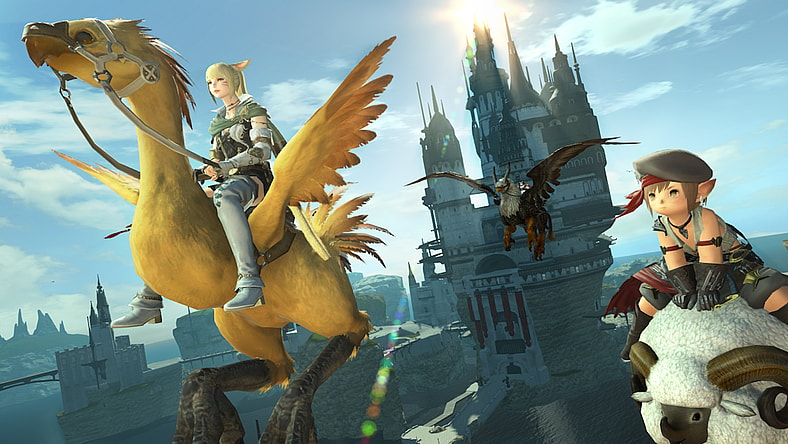
Here’s some essential tips for starting out in Final Fantasy XIV, including things Square Enix won’t tell you.

Final Fantasy XIV is a true Cinderella story — from nearly destroying Square Enix to becoming the closest an MMO has gotten to being a ‘WoW-killer.’ Numerous factors helped turn its fortunes around, leading to five expansions that include the upcoming Dawntrail set to launch on July 2nd.
All this content can be a little daunting. Do you go free trial, or dive straight in? What’s the best way to level? Is there anything the tutorials fail to mention? What do you need to know from the infamous 1.0 version? We’re here to make entering Eorzea just a little bit easier.

What’s Past Is Prologue
The first chapter of Final Fantasy XIV is now ‘lost” content, outside of cutscenes on YouTube and exclusive private servers. Version 1.0 suffered from a lackluster experience, terrible performance, and an eye-watering development cost. But the then-newly appointed Naoki Yoshida (Yoshi-P) saved the sinking ship, by scuppering it.
The game was almost entirely remade, but the story continued. The events of version 1.0 (or ‘Legacy’ to fans) would be canon to 2.0, which became the new base game (A Realm Reborn, or ‘ARR‘). The major events of 1.0 are explained when relevant, and you can easily piece together what happened from the context.
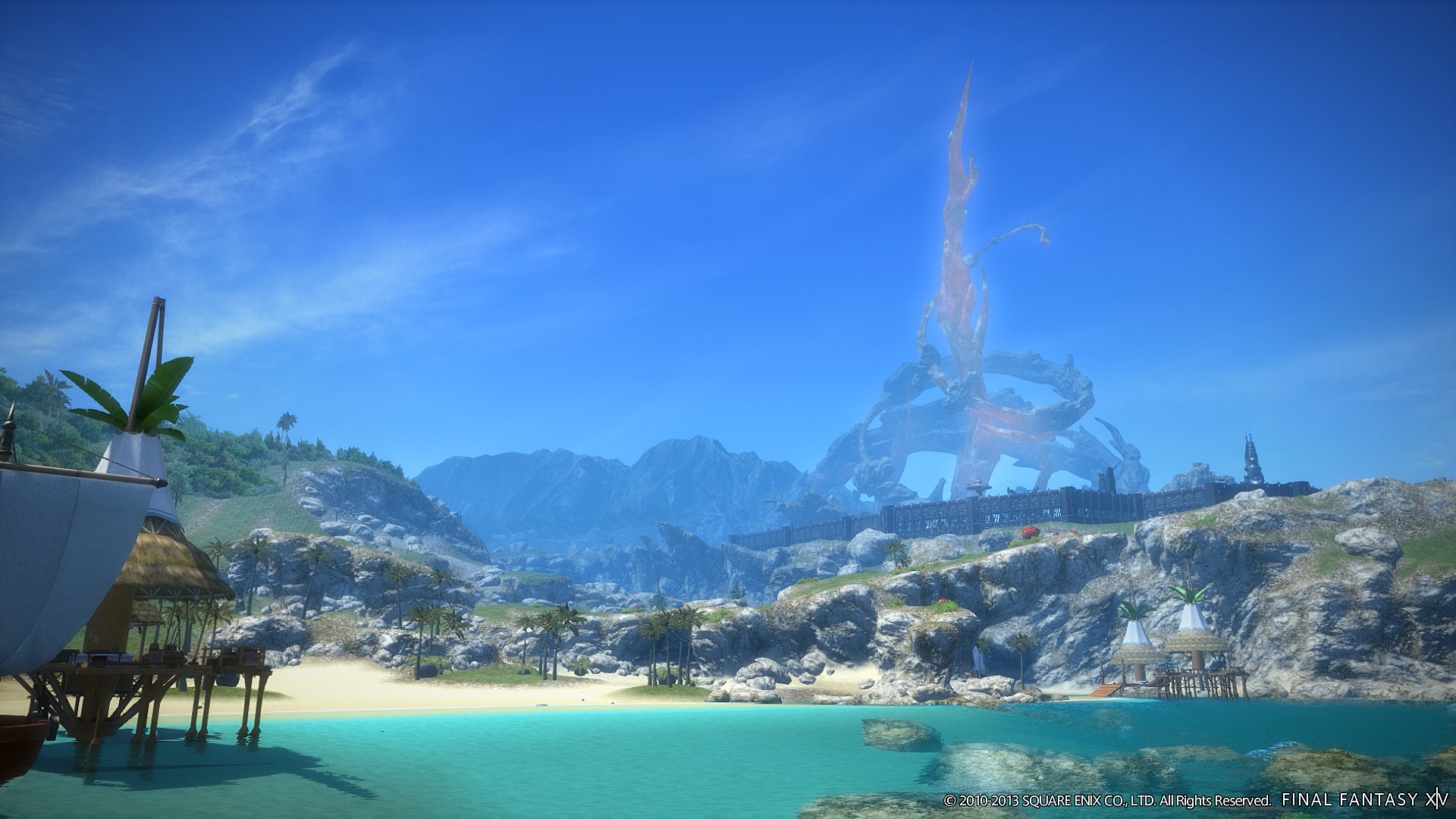
Those who had played 1.0 earned a special tattoo for character creation. While some dialogue and cutscenes differ, don’t worry about missing out, you’ll soon earn the respect of NPCs. There’s no “required reading” to do before you jump into the game.
In fact, one piece of advise we’d give is to avoid trailers and memes! Both of these will contain spoilers.
The memes may spoil stuff that’s long past the point of needing a warning, and the official trailers had a habit of spoiling the prior expansion’s content (Heavensward spoiling elements of A Realm Reborn, and so-forth).

Free Trial and Far From Punishment
The Free Trial is practically a steal. You’ll have access to the base game and the first two expansions — Heavensward and Stormblood. Players can reach level 70 with their characters, and do nigh-all the quests available to them. There are a few caveats, which sound far worse than they actually are.
Firstly, you can’t create a character using races from paid expansions, nor unlock Jobs from them. That includes the Viera and Hrothgar races, and the Jobs of Dancer, Gunbreaker, Reaper, Sage, Viper, Pictomancer, and Beastmaster.
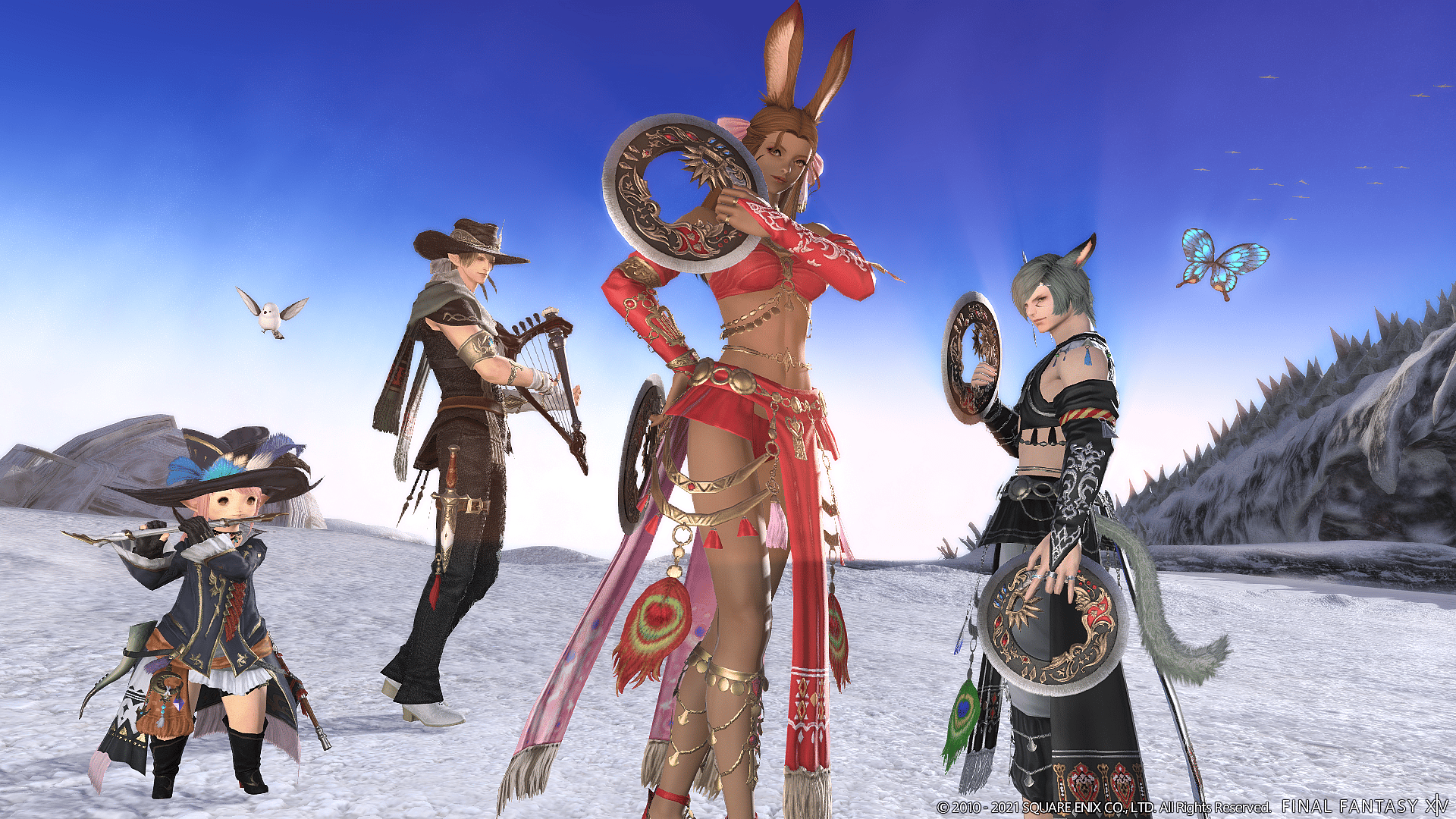
You can only hold 300,000 Gil — the basic currency. This is more than enough to buy gear, materials, and teleport fees — as long as you’re not refusing to do quests, dungeons, and so forth. There are also a handful of limitations to prevent bots from causing issues.
You can’t create a party or invite players into one, or create a listing on the ‘Party Finder.’ On the flip side, you can be invited into a party, join a party listed on the Party Finder, and join random players via the ‘Duty Finder.’
The latter is very unlikely for the game’s harder content, as players rarely queue for it. These are the Extreme and Unreal Trials, and Savage and Ultimate Raids (even though Free Trial players can’t access Ultimate raids anyhow). Players prefer to work with those they know will want to stick around and complete it when the going gets tough.
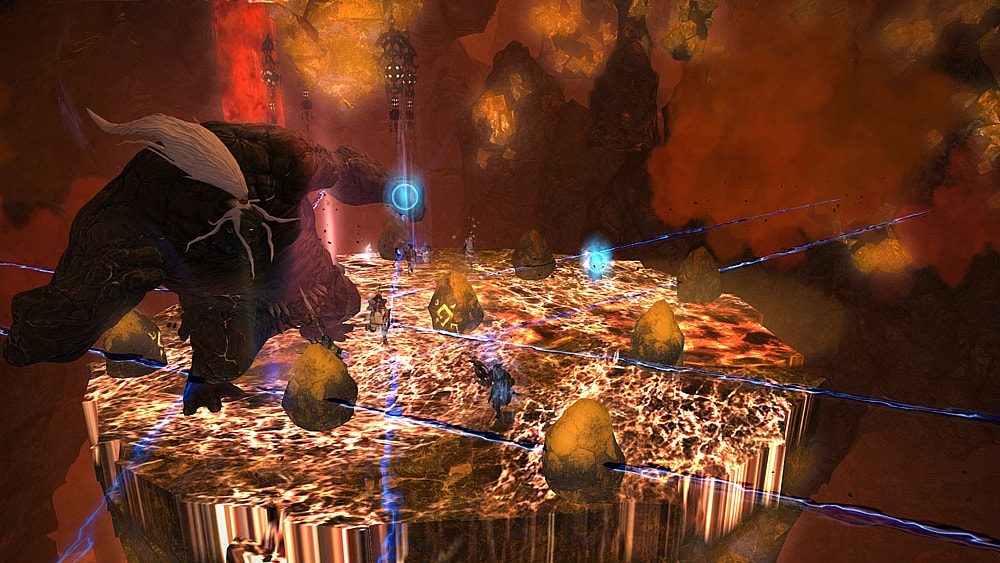
While not impossible, you’ll probably be better asking someone else to make a listing on the Party Finder, or join third-party groups on Discord servers dedicated to taking on that content.
To prevent economic disaster, you can’t buy, sell, or trade with other players, hire Retainers (NPCs that act as extra storage, and handle sales), or buy housing. Not being able to access PvP may be a potential deal-breaker to some.
You also can’t use shout messages (area or server-wide), or join or create a Free Company (equivalent to player Guilds in other MMOs). You can, however, access the Novice Network (a chat room for new and ‘Mentor’ players) and — while you can’t create Linkshells (a personal chatroom for invited players) or send friend requests — you can receive invites to them.
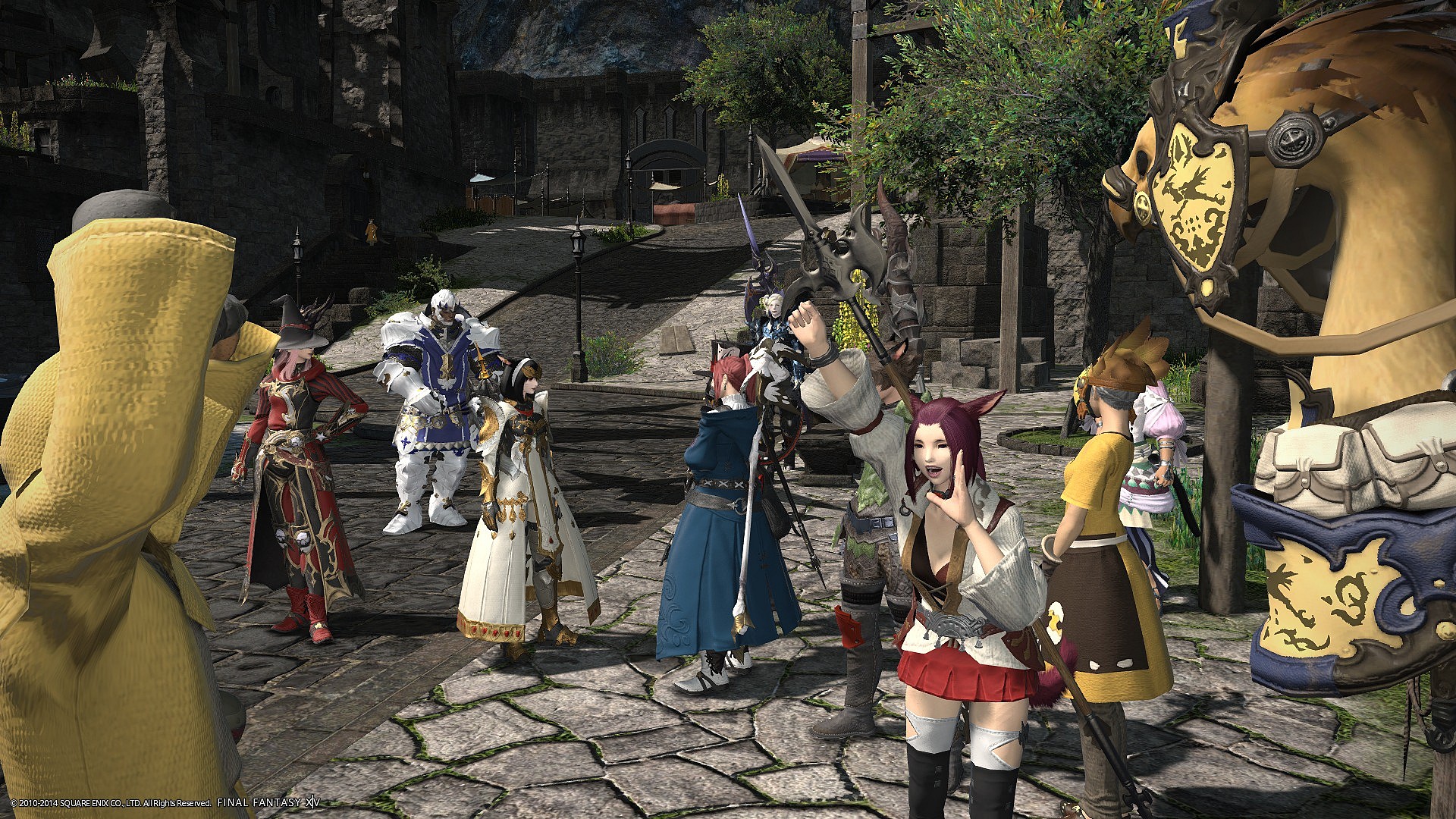
Despite all of this, it shouldn’t prevent you from enjoying 90% of the game’s content! There’s no time restraints, so you can play at your own pace. Just keep in mind transferring your progress from Free Trial on one platform to the full game on a different one can be a pain, if not outright impossible in some cases.
The PC versions sold by Square Enix and Steam should also be treated as “different versions” in this context.
All players on PC, PlayStation 4, PlayStation 5, and Xbox Series X|S can play together — you can even visit other servers (‘Worlds’) or even some Data Centers with some restrictions. Suffice to say, once you start playing the full version, you can’t go back to the Free Trial version.

As such, there’s absolutely no reason not to start via Free Trial. Of course, there’s nothing wrong with buying in straight away — especially when the game usually goes on sale just before the launch of expansions and major patches.
Gil and EXP earned once you hit the caps on Free Trial are lost, though you can quickly catch-up. Even so, there’s nothing wrong with buying in even if you’ve not finished all the content in the Free Trial — some of it might even be easier without your restrictions.
As an aside, the Final Fantasy XIV Benchmark not only ensures you can run the game, but even lets you create characters and import them into the Free Trial and full game; be it your playable character, or your Retainers!

RELATED: ‘Final Fantasy VII Remake’ Mod Restoring Tifa’s Uncensored Cowgirl Costume Removed By Nexus Mods
Character Creation, Classes, and Jobs
Once you create a character, you can’t change most of its physical characteristics. These include race, sex, height, voice, as well as eye and skin color, among other. You’ll need to buy the premium Fantasia item from the game’s online store to change those (and premium items cannot be purchased on Free Trial).
You do earn one free Fantasia for beating ARR however, and another is promised to be available as a reward in a low-level side quest in Ul’dah.
Other elements you can’t change include your Nameday (birthday) and Patron deity. The former does nothing, and the latter only pays off in a few scant conversations — especially during the “Myths of the Realm” raids in Endwalker.
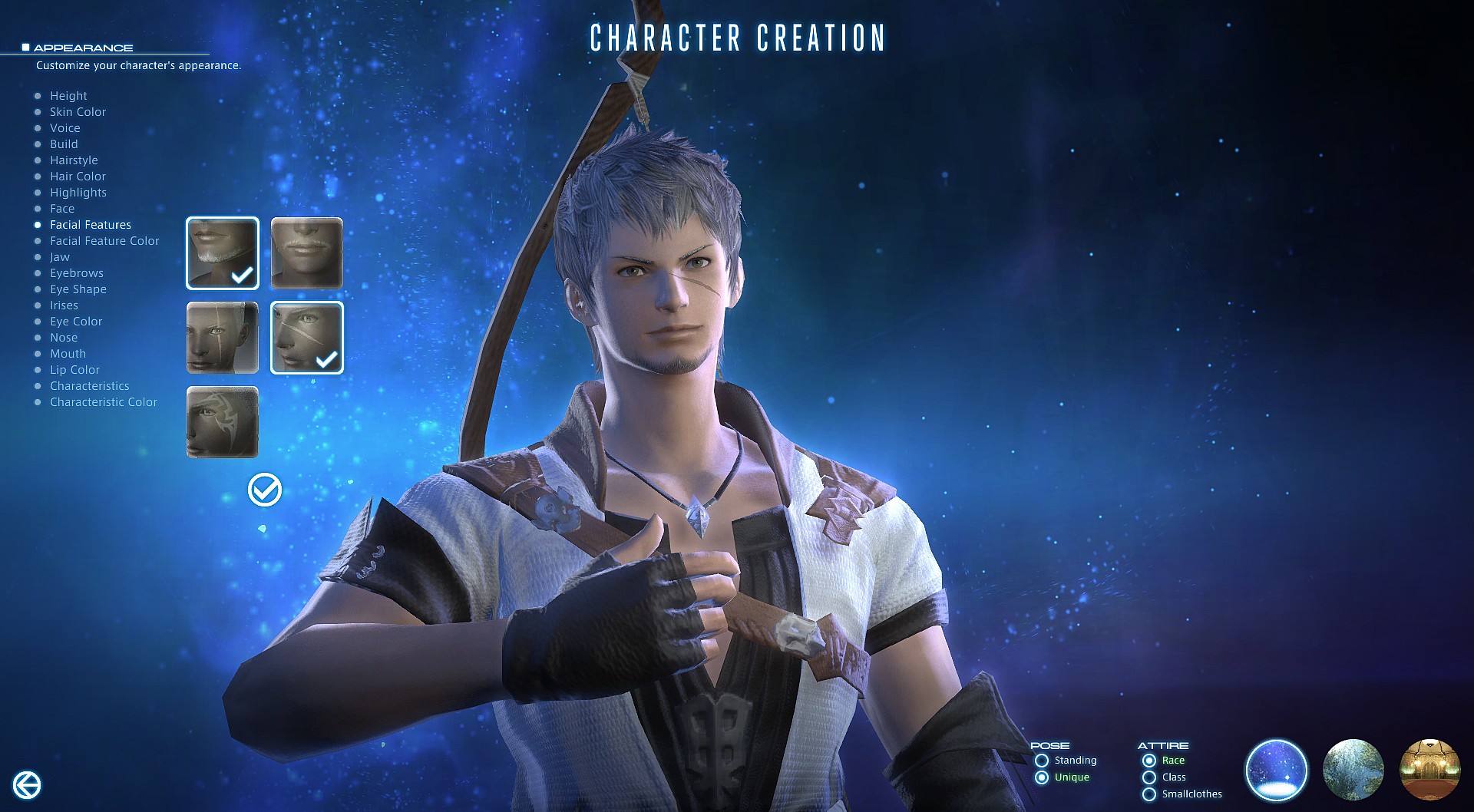
Once you unlock the Aesthetician vendor (via the level 15 ‘Beauty Is Only Scalp Deep’ side quest in Limsa Lominsa), you can go to an Inn to change your character’s hairstyle and color, tattoos, face paints and some facial features such as scars (for a small amount of Gil).
While the different races have different stats, these are absolutely dwarfed by gear. There’s a mere six points between the highest and lowest starting values, and the stats of gear from level 25 to 30 starts to offer that or more. Feel free to be a short king wielding a giant sword, or a hulking brute wielding a magic book.
You’ll also need to choose your initial Class. Classes upgrade into Jobs when they reach level 30 (the Gladiator Class becomes the Paladin Job, for example). The Class will stop learning new skills, and you can equip the Soul Crystal (also called a Job Stone in the community) to gain access to the Job’s Skills, Spells, Abilities, and Traits.

RELATED: Four Years After Release, Square Enix Censor Tifa’s Cowgirl Outfit In ‘Final Fantasy VII Remake’
Once you unlock a Job, there’s no need to play its inferior Class. Remember to import your Hotbars once you switch from Class to Job so you don’t have to reassign everything!
Your first Class will affect which of the three City-States you start in, but don’t feel you have to pick its associated Grand Company, or keep playing that particular Class/Job. Once you reach level 10 with your first Class (and have completed its level 5 Class Quest), you can freely unlock the other Classes.
There are some oddities to consider. You can’t start as a Rogue — the Class for Ninja — as it needs to be unlocked after beating a level 10 Class Quest. The Arcanist Class also has two Jobs, the DPS Summoner and Healer Scholar.
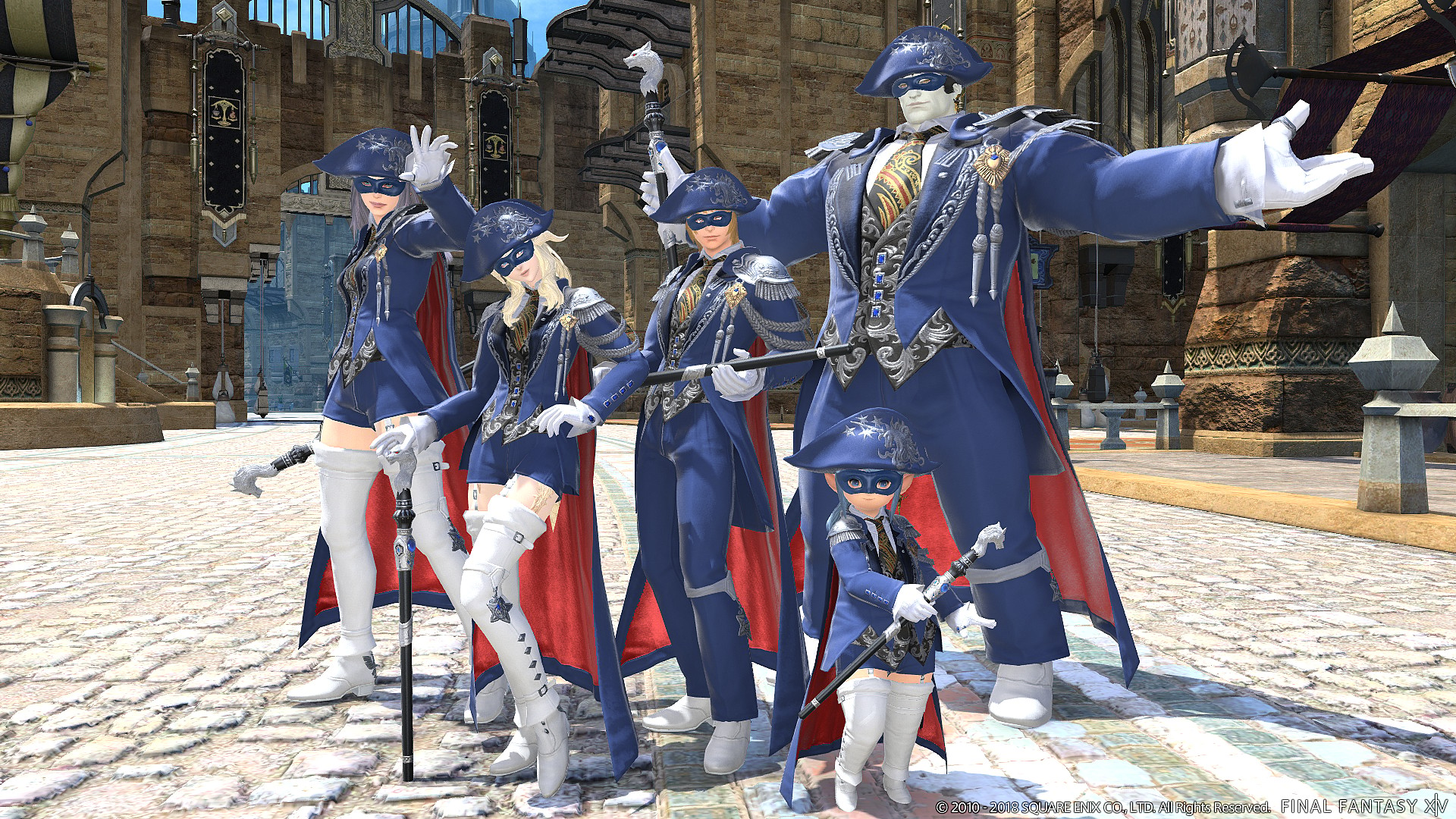
Jobs from expansions have no base Class. And finally, the Blue Mage is a special “Limited Job” you can unlock after completing ARR.
Your character doesn’t have a level, but rather each Class/Job does. As you can unlock and play them all, you could be a level 60 Paladin and a level 20 Black Mage. Just remember to bring starting gear for when you start a new Class! Summoner and Scholar also share their EXP and level.
Due to what roles are most popular, the shortest queue times in the Duty Finder are as a Healer. Tank is a close second, while DPS can take a bit of time. You may be better doing solo content while you wait for your DPS queue, or do solo content with just DPS Jobs to help level them.
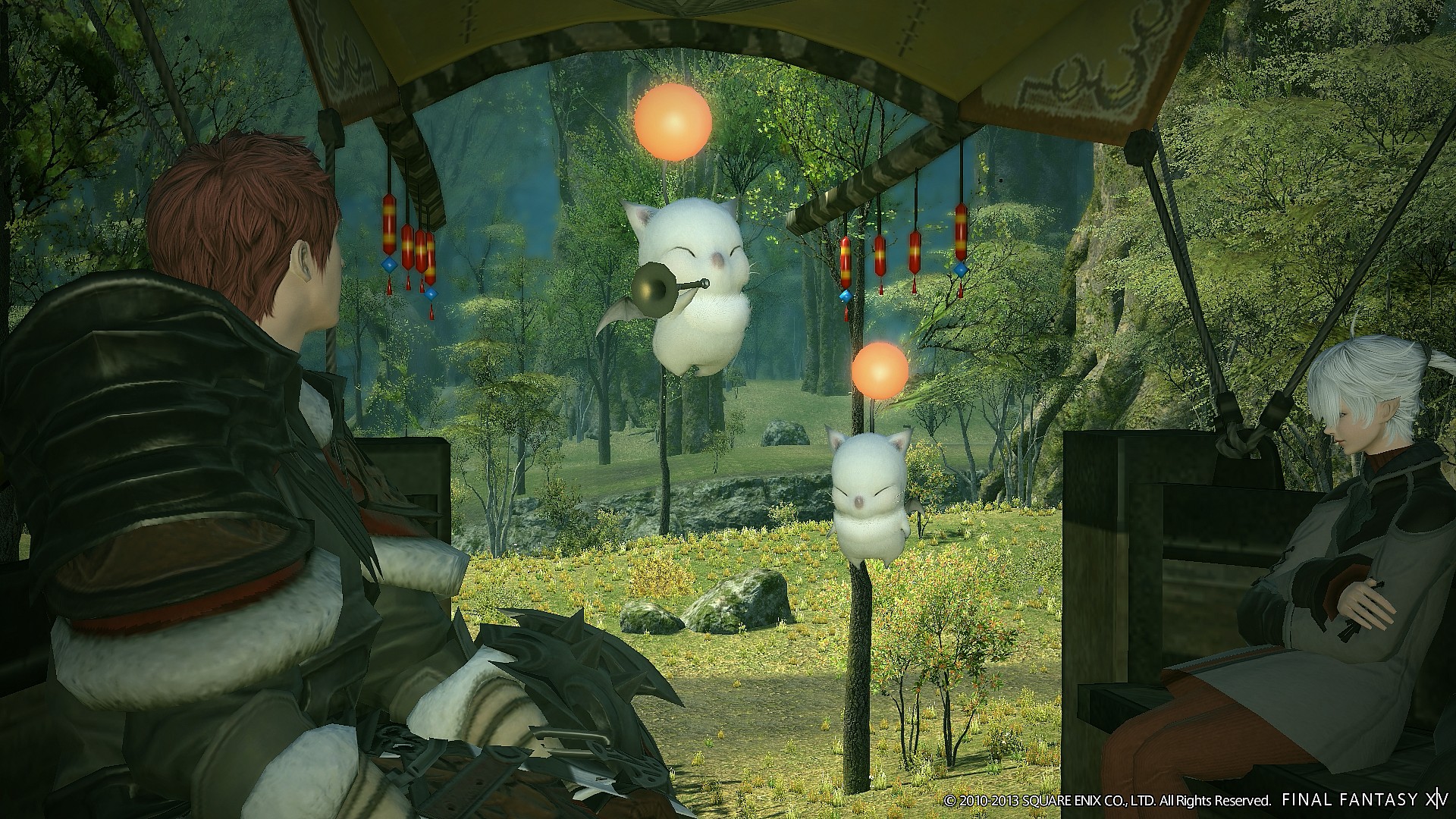
Early Game and Experience Gain
“It gets better after 100 hours” is unironically the case with Final Fantasy XIV. Your first experiences are likely to be repetitive and sluggish — using a few attack skills over and over to kill small pests. The initial enemies you fight can also be easy, due to how AoE attacks work.
Enemies will highlight the area they’re going to hit in an orange zone, and as long as you’re not standing in it when it vanishes (the ‘snapshot’), you don’t get hit — even if you walk back into that area as the attack animation plays out. Enemy cast times are usually very generous, and it can be understandable to drop the game at that stage.
The challenge comes with the harder content later on (the aforementioned Extreme, Unreal, Savage and Ultimate Duties). Here, bosses deal massive damage if you stand in the wrong spot, fail to keep additional foes busy or kill them in the wrong order, react the wrong way to various debuffs, and numerous other mechanics. All while trying to maximize your damage output with your Job’s unique abilities.

It’s akin to spinning multiple plates, while playing Simon Says, the ground under your feet is moving, and your friend has decided to stand in the ‘we all die’ spot because he wanted to get a few more hits in on the boss. True challenges await you, but you’ll need to stab a lot of ladybugs and rats first.
As a rule of thumb, the best way to get EXP is to plow on with the main story, or Main Scenario Quests (MSQ). Those quests offer the most EXP and, sadly, as long as you’re wearing gear of the right level, you shouldn’t struggle. Side quests are actually the worst source of experience, but can offer High Quality gear should part of your kit be falling behind.
A notable exception are the blue side quests with a plus symbol on them. These are Feature Quests, and completing them unlocks new Classes, Jobs, Skills, and various other features and content. As such, MSQ and Feature Quests should be a high priority. Of course, your enjoyment is the top priority, so tackle the game as you wish.
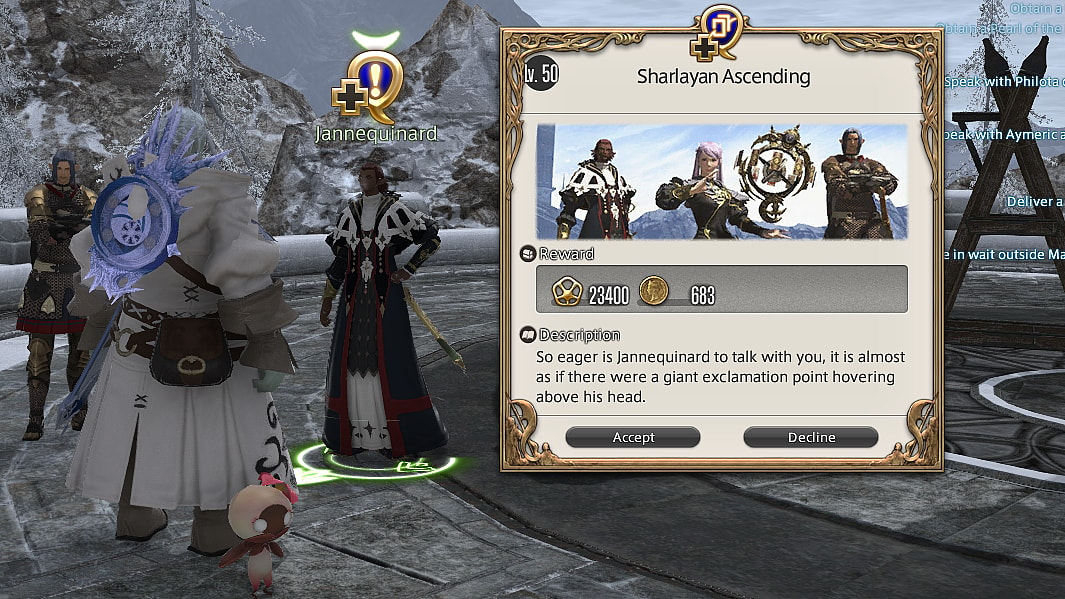
Beyond that, your next best option for EXP is your Duty Roulettes — a daily bonus that comes from using the Duty Finder to be assigned to a random party to take on various Dungeons, Raids, and more.
The weekly ‘Wondrous Tails’ objectives unlocked at level 60 in Idyllshire (with the quest ‘Keeping Up with the Aliapohs’), also grants EXP equal to half your current Job’s EXP bar. So if you needed 100,000 EXP to reach the next level, you’ll be granted 50,000 EXP — even if you already had 99,000 EXP!
Beyond that, you’re best replaying the highest level dungeon your Job can that doesn’t end in 0. These ‘Leveling Dungeons’ are designed to help push your character’s Job to the next content it’s currently too low-leveled to take on.

One minor aside is that the ‘Palace of the Dead’ — a special multi-floor dungeon with unique rules — offers a lot of EXP for characters under level 60 in the Floor 51 to 60 region.
But as older content, you’ll struggle to find the help outside of dedicated groups, and you’ll need to get to level 51 first. You’ll probably spend more time trying to set it all up than you would have spent running Leveling Dungeons.
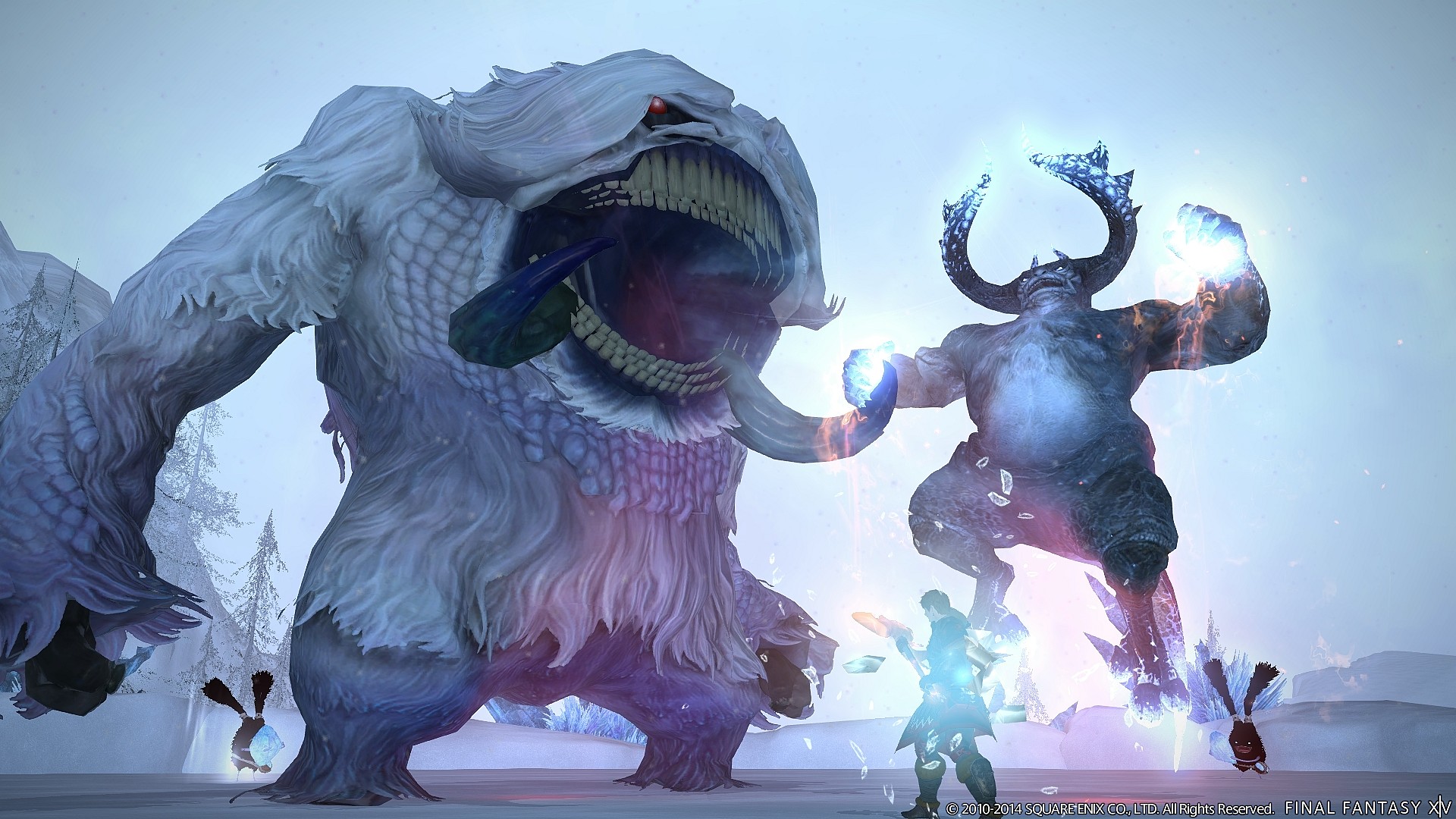
Most EXP buffs from food and other items only apply to the EXP from killing a foe, gathering an item, or crafting something — not the reward for completing the dungeon, quest, and so forth.
Likewise, you get extra EXP for a Job that’s a lower level than your highest-leveled Job (the ‘Armoury Bonus’), but again, this only applies to killing EXP and — in this instance — FATE awards.
Nonetheless, these can add up, as you’ll always be killing enemies. As nearly any source of food grants you the Well Fed buff for an extra 3% EXP, stock up on Orange Juice. It’s sold across multiple locations you’ll be visiting early in your adventure, and one of the cheapest (though Boiled Eggs and Raisins are cheaper).
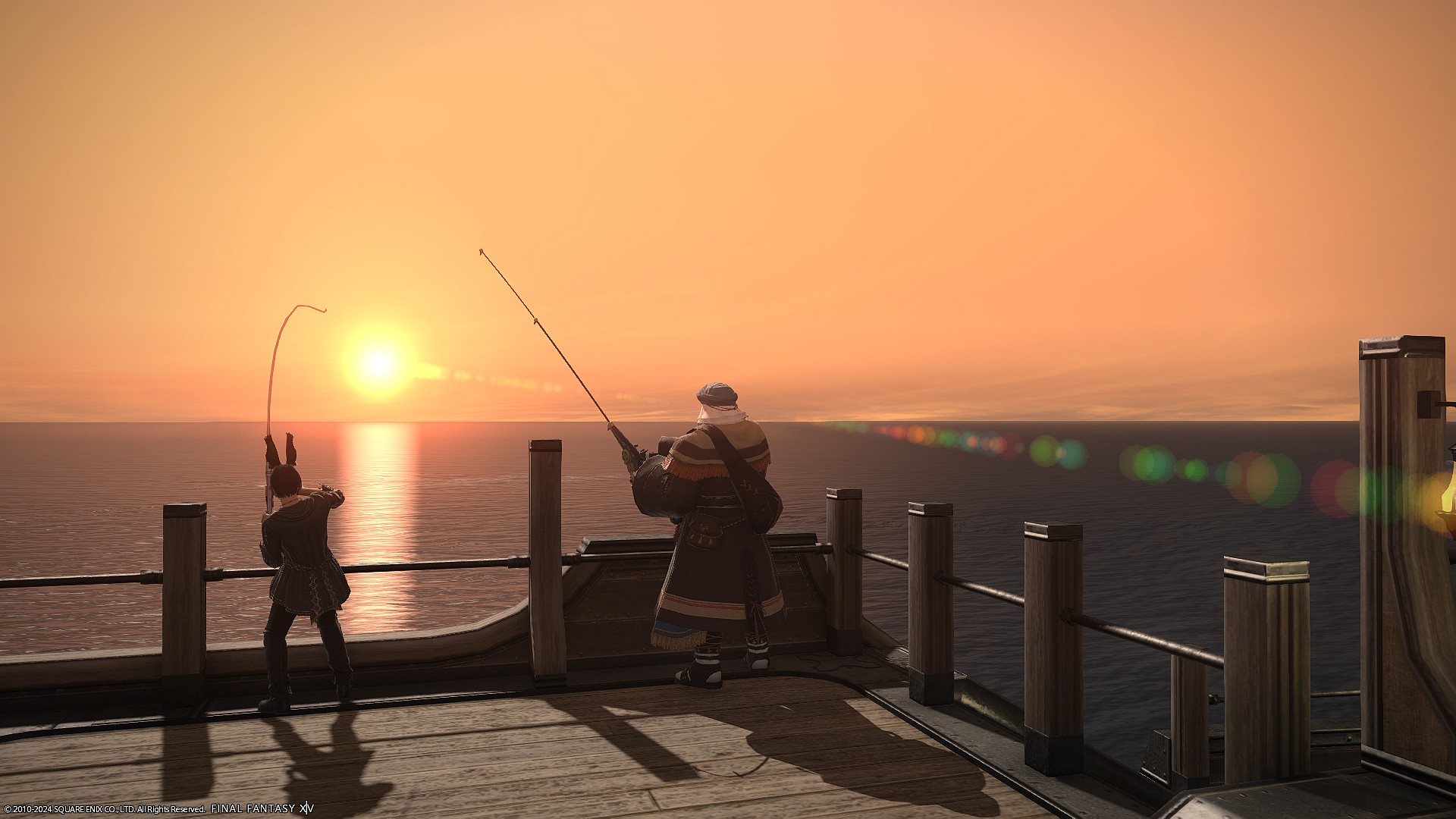
For Crafting and Gathering classes — though slow at first, leveling is shockingly easy. Grand Company Supply and Provisioning Missions ask you to provide specific items fitting your Crafter or Gatherer’s level. You don’t even need to make it yourself, and can later find locations that sell the supplies you need for easy crafting (albeit, a tad pricey).
Regularly undertaking this, along with Collectibles, Custom Deliveries, and Levequests (especially the large-scale Temple Leves in Heavensward), and you’ll soon max out Crafters and Gatherers. You may even want to level those classes at similar rates, so you can always get or make what other Classes need.

Options Aren’t Optional
One of the most important things you must do when you can first control your character, is choose the right movement settings. ‘Standard’ is more akin other MMOs, where you rotate your character, strafe left and right, and move forwards or backwards. However, walking backwards is very slow. To those not used to this, it can be an absolute nightmare.
As such, ‘Legacy’ may be the better choice for you, behaving more like other third person games — your character turns and moves in the direction you press. There are some “gaze” attacks that require your characters model to be facing away from the source to avoid getting hit, but it’s a trifle once you are comfortable moving.
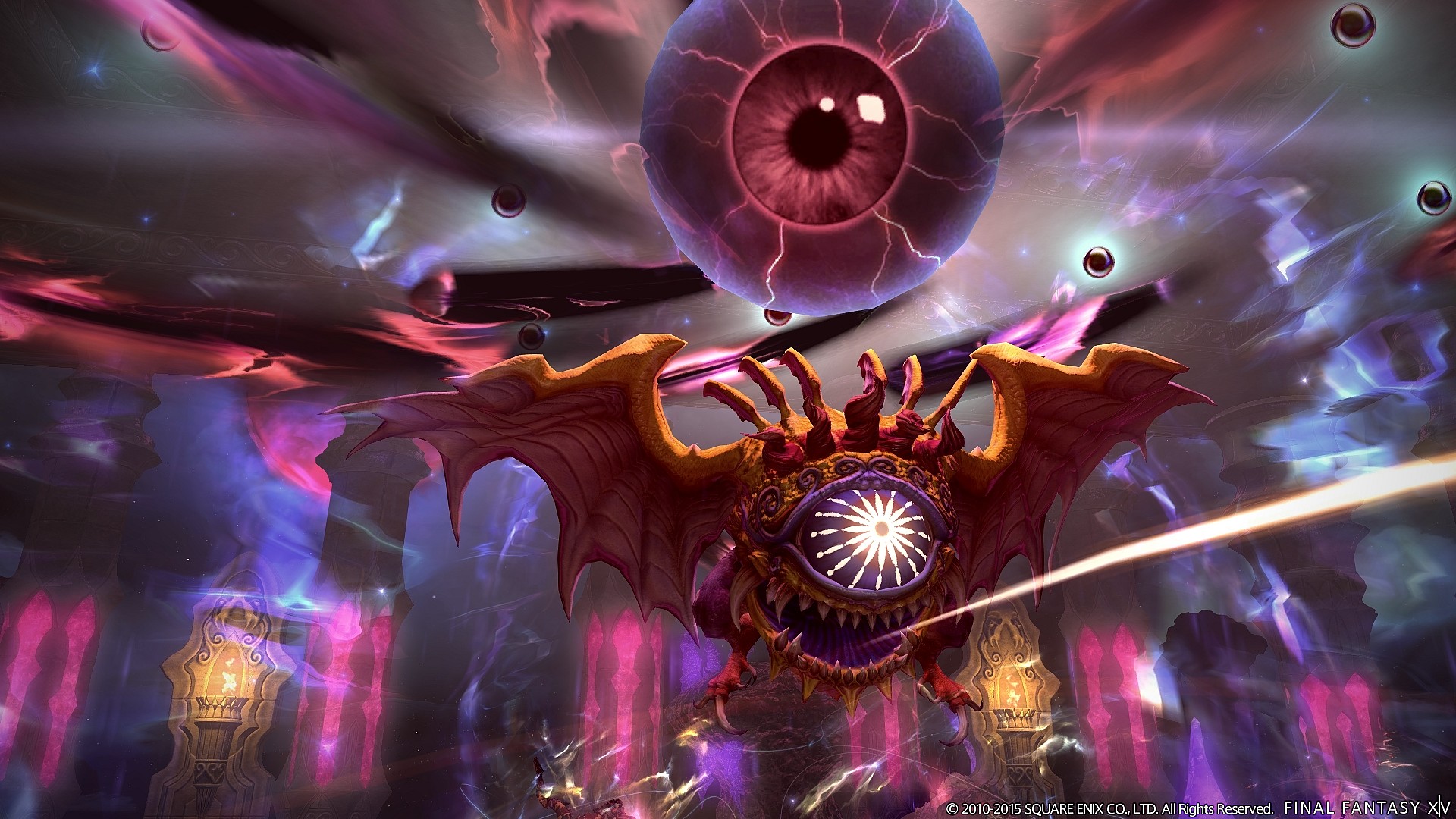
There are some other settings you may want to fiddle with as well. Aside from Keybinds for menus you will frequently open (if you’re using mouse and keyboard), don’t forget to change some Hotbars to “shared.” This will ensure they have the same content (commands and shortcuts) no matter what Classes/Jobs you’re playing as. Your other Hotbars will change with the Classes/Jobs, so assign their skills to them.
Keybind menu commands you are going to frequently use, or change the UI to your taste. You can even customize multiple UI layouts, and swap between them depending on what you’re doing (but the content of the Hotbars will be the same, even if their location is different).
Adjust what you want as you play for convenience and comfort, and don’t forget the power of Macros. These can be used to set up reminders for yourself, create vanishing Hotbars for a collapsible menu effect, and create a shortcuts for toggles and menus you can’t usually put on a Hotbar.

RELATED: Square Enix Censors Maya Mahabala’s Sexy Dancer Outfit In ‘Dragon Quest Monsters 3’
Getting The Edge In Combat
Returning to combat, there are some good habits to pick up now, for when you do harder content later (that the tutorials won’t mention). While you should stay alive, keeping the damage output going is always good — even Healers should be doing damage. As such, remember APB — Always Push Buttons!
You might use the wrong action, use it too early, or be reduced to spamming a weak ranged attack while the boss is out of reach. This is fine, as you’re still doing damage, making future attacks stronger, or reducing damage allies take. Mistakes are bad, doing nothing is worse. But dying is even less favorable than that.

All combat actions are divided into Weaponskills, Spells, and Abilities. The first two typically have a Recast time of 2.5 seconds. This is the ‘Global Cooldown’ or GCD. Anything with this Recast time are the fastest actions you can perform, and you are briefly locked out of doing any other GCDs.
You’ll notice the icons have a clock counting down when you can next use it (more powerful actions may take longer to cooldown). In the case of a GCD, you can take advantage of server latency by hitting the button a tiny bit before its ready. Your input will register just as it’s ready to use, which will eventually add up to extra inputs.
Abilities can be executed even while a GCD is being used (except Spell while the cast bar is up). This is called ‘Weaving,’ and a key part of maximizing damage output. One or two Abilities — or Off Global Cooldowns (OGCDs) — can be used between Skills before the GCD is complete.
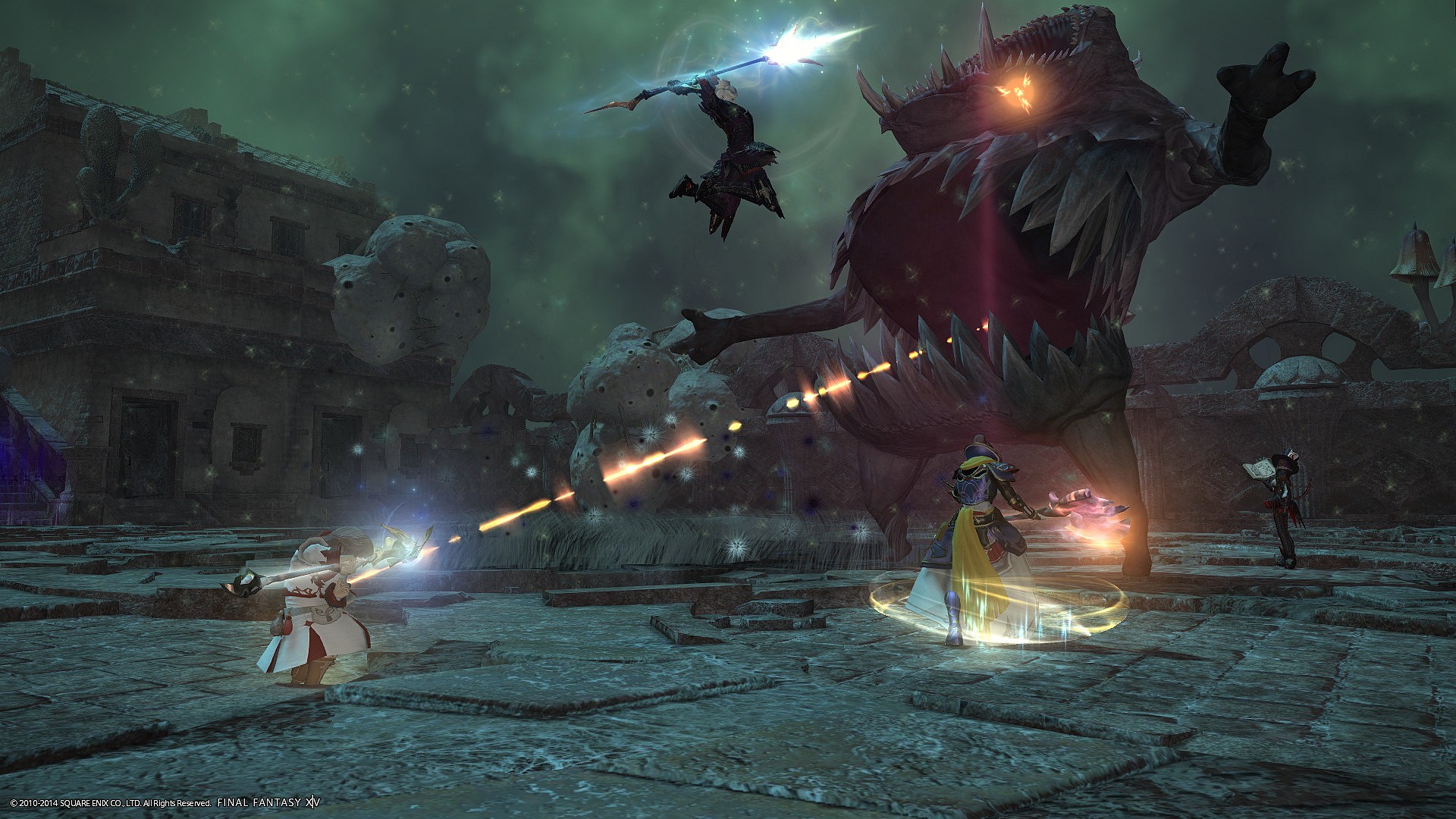
RELATED: Square Enix Drops New Trailer For ‘Final Fantasy VII Rebirth’, Officially Confirms PS5 Release Date
Another good trick to take advantage of server latency is “slidecasting.” When you cast Spells, you typically have to stay still and do nothing else until the cast bar is complete. Except, you can move when the bar has around a third to a quarter to go, and the spell will still complete. Once you get the knack, your spellcasters will be a little more mobile.
On the subject of ranged DPS, it can be tempting to hang far, far away from the pack to almost guarantee no attack will hit you. You’ll also be out of range of your allies’ buffs and heals that apply to those near them, and mechanics may demand you stand near your allies. Think ranged DPS as ‘mobile DPS,’ and don’t be a lone wolf to your party.
Most actions (apart from Spells) allow you to keep moving even while the animation is playing. Use that to keep out of danger, while taking advantage of your positionals if you can. Limit Breaks and several Dragoon jumping Abilities will lock you in place for their duration (“animation lock”).
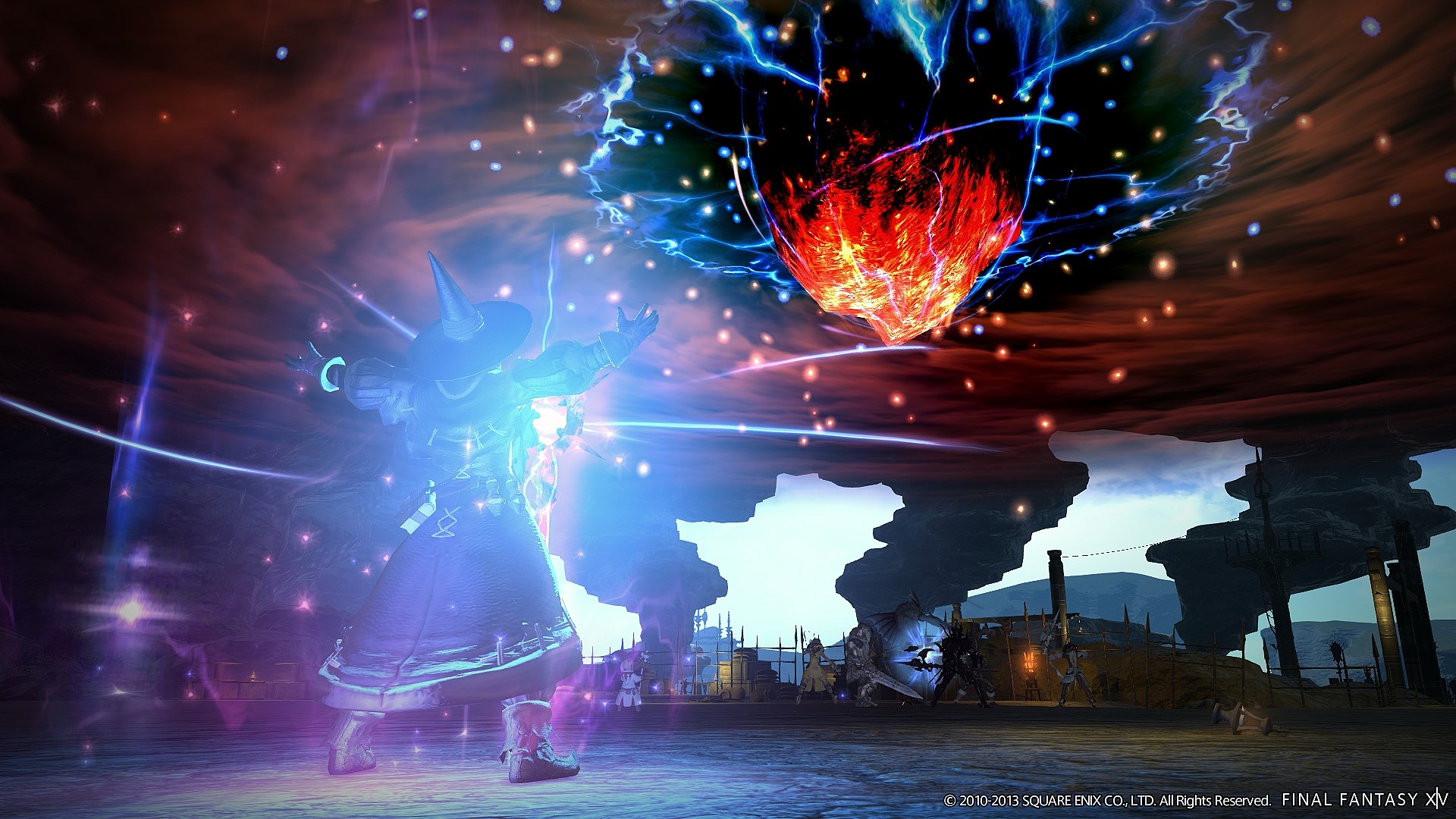
Your AoE skills are usually good against three or more foes (dealing more total damage output than striking individual foes with single skills). Nonetheless there are exceptions, such as Scholar’s Art of War being efficient with two or more. Another exception is for Tanks, who want to keep attacking all foes around them to keep aggro on themselves.
Speaking of Tanks, the typical etiquette in a dungeon (once you know what you’re doing) is to pull every enemy you come across until you hit a door you can’t open. If you stay and are kept alive, this “wall-to-wall” tactic will allow you and the party to unleashing AoEs across multiple enemies- killing them quicker, and saving time.
You should also consider that your damage reducing abilities (mitigation or ‘mits’) are multiplicative, not additive. Two 10% buffs do not make 20%. Use them one at a time to minimize having all your mits are on cooldown. Alternatively, certain boss attacks may dictate specific mitigations for them, or using more than one.

To our dear Healers, you should know Esuna will only remove debuffs that have a white line above them. Other debuffs either can’t be removed at all, or have special requirements. While most buffs are blue and debuffs are red, keep in mind buffs are shaped like upward arrows, while debuffs point down.
Those thinking they can use Macros to make targeting allies easier or automating their 1/2/3 combo: Don’t. Macros don’t function like abilities, and other actions you perform can cancel them.
They’re usually best for when you want to automatically tell the party what you’ve just done (such as Shirk, which gives aggro to someone else), or what you want them to do (having a quick button to warn allies to run, use the Limit Break, etc.)
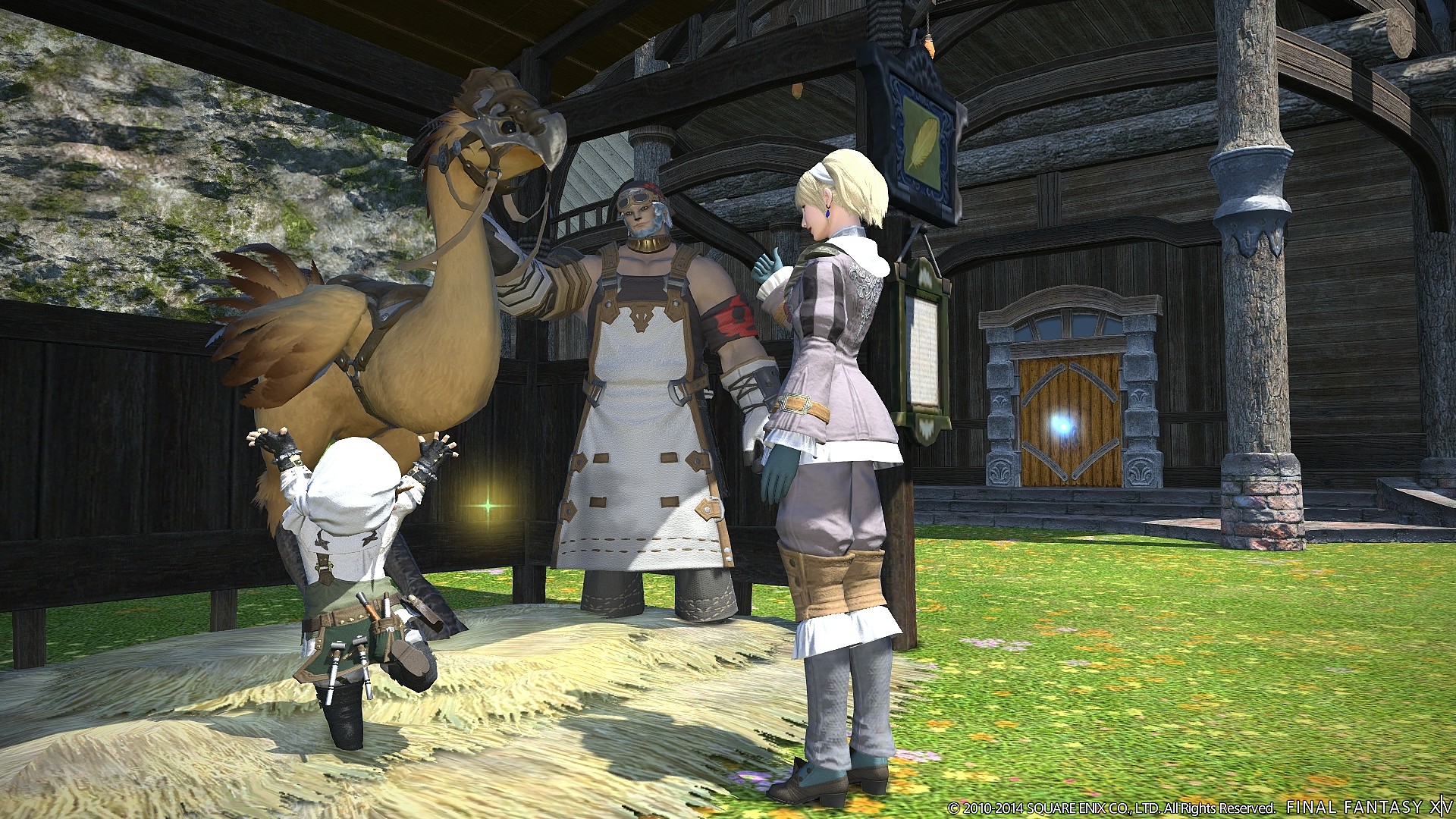
Chocobo, Ho!
One particular Feature Quest you should do is ‘My Little Chocobo,’ unlocked at level 20 (after completing the MSQ ‘A Hero in the Making’), and part of the Grand Company quests. This grants you a Chocobo companion to fight at your side in the overworld. Its stances make it act like a Tank, DPS, or Healer (with ‘Free Stance’ using its whole arsenal).
As there’s a limited number of Ranks it can gain (its version of levels), and you’re likely to be playing alone in the overworld, you’re best to spend its Skill Points (SP) to unlock Healer skills to keep you alive. Even so, you can reset its skill points with a Reagan Pepper.
To raise your Chocobo above Rank 10, you’ll need a Thavnairian Onion. You only get two in sidequests (one in The Pillars, and another in a questline in the The Dravanian Forelands). Otherwise it’s a far longer process via gardening in your home, or bought from other players on the Market Board. Each Onion allows it to reach another Rank, up to 20.

Make sure you use the Thavnairian Onion outside a city (and while your Chocobo is out), or you’ll use and lose the Onion, with no effect.
Most importantly, your Chocobo becomes your first Mount. While you can obtain Riding Maps to make all your mounts faster in specific areas, it should be noted you unlock flying after completing ARR‘s MSQ (‘Terrestrial’ and ‘Flying’ mounts mean nothing now — all mounts can fly once you have it unlocked).
Flying is always at the maximum land speed, and it can fly over obstacles. Territories beyond ARR will demand players find Aether Currents in order to soar above it all (half scattered across the map, and others as rewards for clearing all MSQ and side quests in that area).
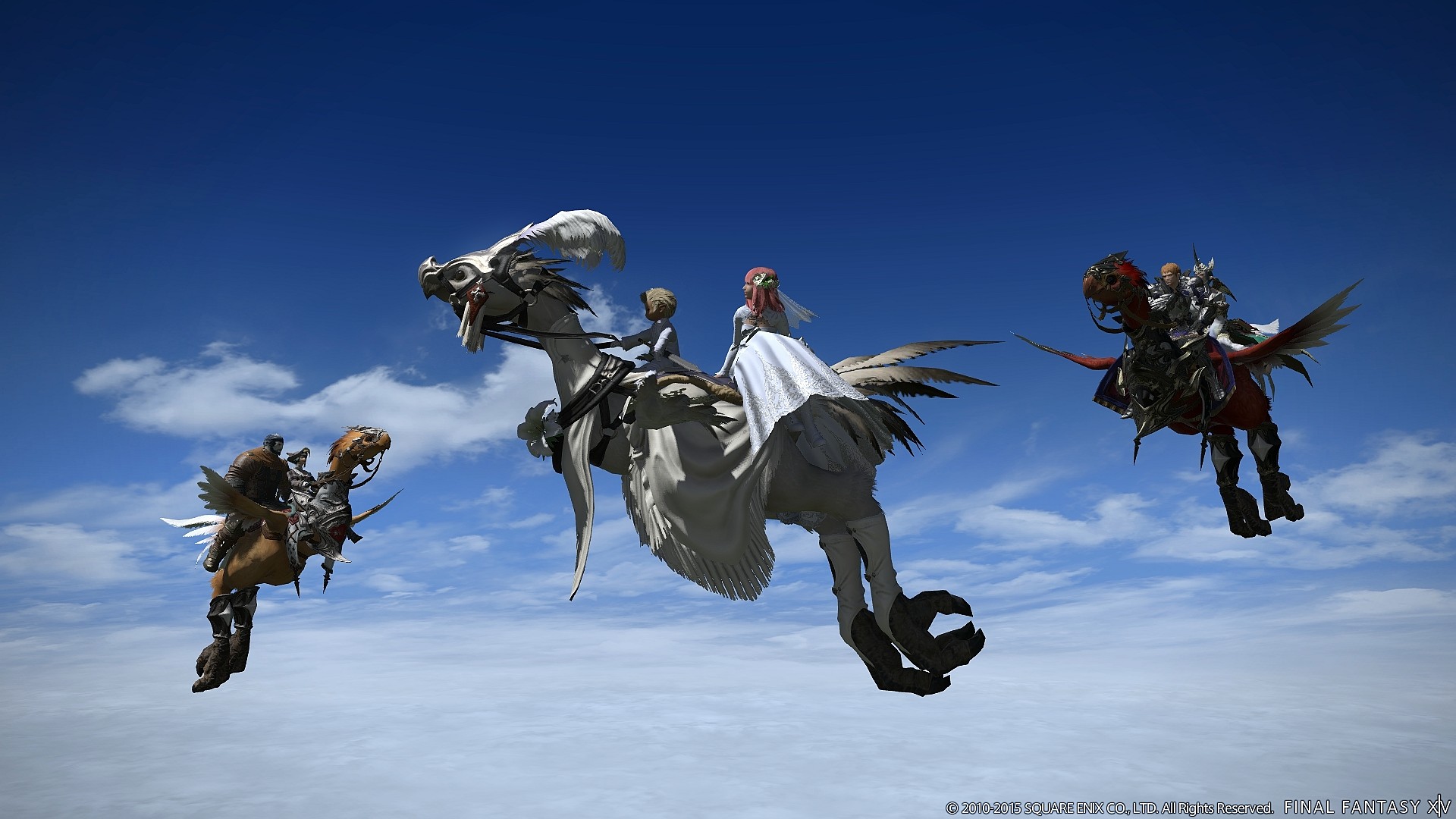
Assorted Advise
Here’s some other pieces of information that should be kept in mind.
Early in your adventure you’ll find a place called Hall of the Novice (just north of Aleport in Western La Noscea) along with The Smith NPCs at the Inns of the three City-States. These give you short battles to teach you the basics of combat.
Even if you know what you’re doing, they’re worth completing as they give you some decent level 15 gear that should carry you for a few levels — especially the Brand-new Ring, granting an extra 30% EXP to Classes/Jobs below level 30.
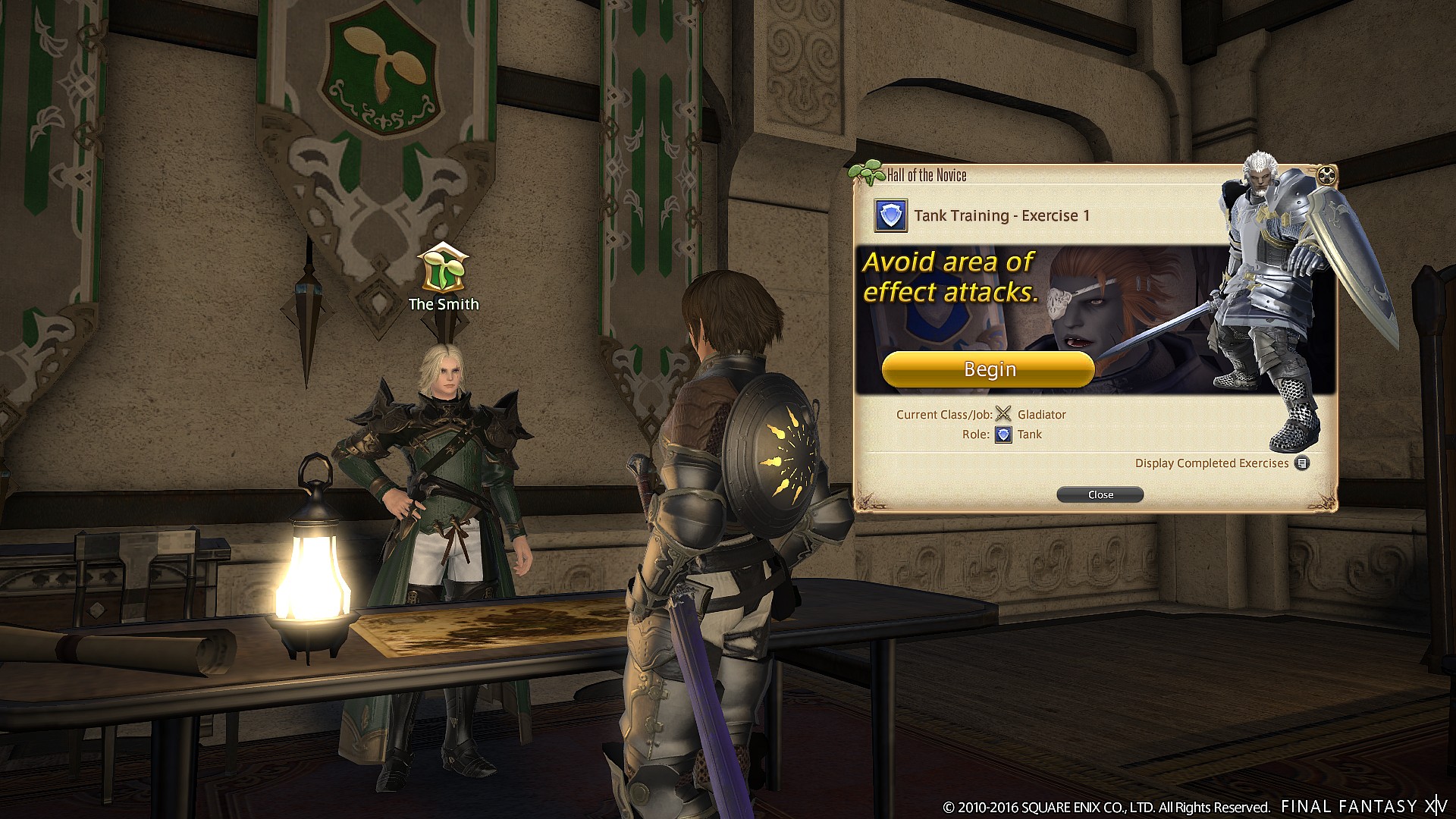
RELATED: Square Enix Reveals Total Sales For Final Fantasy XVI
The gear you get depends the Role you do the lesson under — dodging AoEs as a Tank gives a different reward to dodging as a DPS — even though the battle is the same. Here’s a break down of the Exercises you need to do to get the gear.
| Role / Gear Slot | Body | Hands | Legs | Feet | Ring** |
| Disciples of War (DPS Melee/Physical Ranged) | Exercise 6 | Exercise 1 | Exercise 4 | Exercise 2 | Exercise 7 |
| Disciples of Magic* (DPS Magic) | Exercise 6 | Exercise 1 | Exercise 4 | Exercise 2 | Exercise 7 |
| Tank | Exercise 7 | Exercise 1 | Exercise 5 | Exercise 3 | Exercise 8 |
| Healer | Exercise 4 | Exercise 1 | Exercise 3 | Exercise 2 | Exercise 5 |
* Disciples of Magic gear is the same as Healer’s gear, even though they’ll have different Exercises.
** The Brand-new Ring can be worn by any combat class.

FATEs are limited time quests players can dive in for rewards, their levels temporarily synched to match the challenge. While most of these can be completed solo, some are also tied to Achievements, and tend to be much tougher, demanding multiple players to clear.
A quick shout out in the Novice Network is also appreciated for those who still need to clear it, or obtain its reward. Clearing some FATEs also causes other FATEs to spawn, including Achievement FATEs.
To save you having to check your Battle Achievement tab for every FATE, listen to the jingle when you enter its zone. If you hear strings, its a normal FATE. If you hear a triumphant-yet-daunting trumpet and horns, it’s an Achievement FATE. Call in the cavalry!
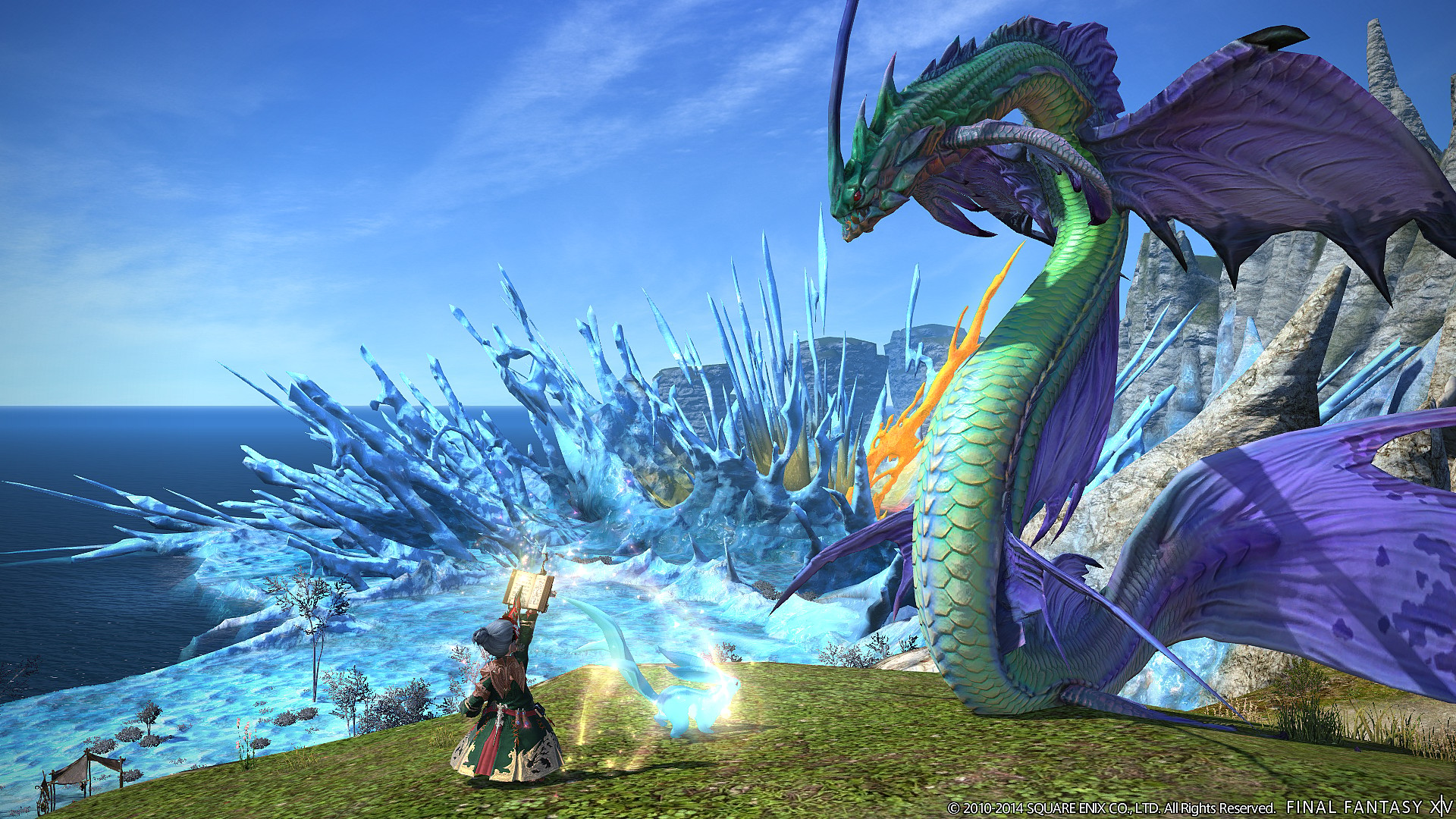
RELATED RUMOR: Insider Claims Square Enix Is Panicking Over Poor ‘Final Fantasy XVI’ Pre-Sales
Should you run across a foe that is far over-leveled compared to other creatures, you’ve just found an Elite Mark for The Hunt. Elite Marks are foes that are the maximum level for its expansion (level 50 in ARR, 60 in Heavensward, etc.) and their Rank can affect how much of a challenge they are. You can find all their names, ranks, and spawning conditions here.
B-Ranks (typically passive with a blue icon) respawn in a random location near-instantly after death, and can be taken on easily by a single player of reasonable level. A-Ranks (aggressive with a red icon) usually take a long-time to respawn, and need a party to be taken down (with higher leveled players making it easier).
The S-Ranks are typically huge, and spawn only under very special conditions. These usually would require careful planning and a decent number of players. As their deaths are tied to Achievements however, someone will usually shout out their location, and half the server will turn up! Once the all-clear is given, everyone piles in, and it dies in 5 seconds. GG.
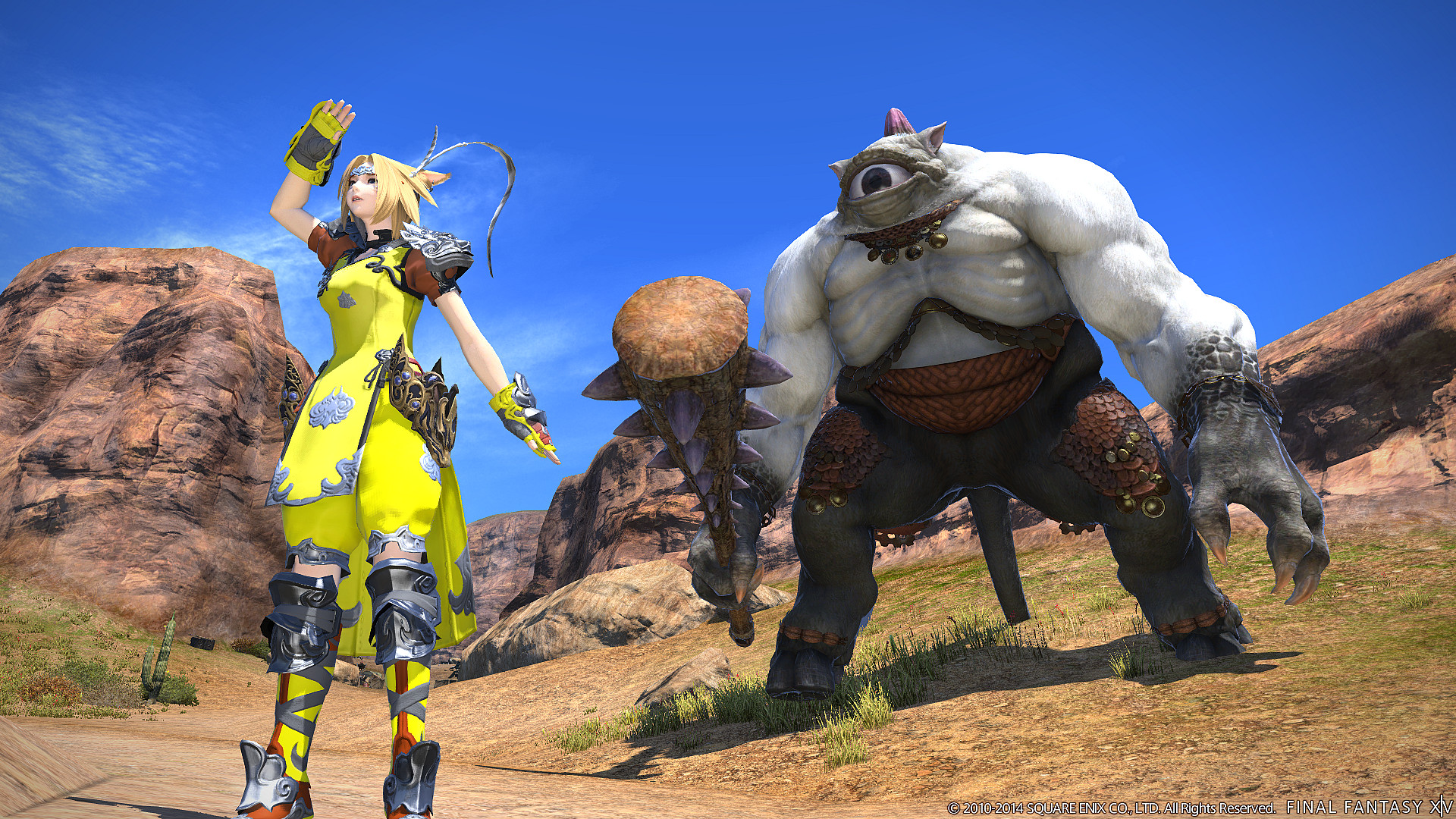
The Phoenix Down may be an iconic item in the franchise, but its usage is a bit more limited here. Firstly, you’ll get two across your adventures — the Hildibrand Feature Quest ‘The Rise and Fall of Gentlemen’ and the side quest ‘A Faithful Companion’ in Coerthas Western Highlands.
They can only revive other players outside of combat, not yourself. Even if you run across a defeated player in the overworld, odds are they’ll respawn back at their home Aetheryte, or a Healer will come along and use their Raise spell. What’s worse, Phoenix Downs don’t stack in your inventory, meaning you’ll need to separate them between Retainers or Saddlebags.
Their value comes in the Palace of the Dead and other Deep Dungeons. They’re a God-send if your Healer has died, or you’re in a party without anyone who can cast Raise. You can also rarely find Phoenix Downs in the Palace of the Dead.

RELATED: ‘Final Fantasy XVI’ Endgame Includes New Game+, Higher Difficulty Modes, And Chronolith Trials
Duty Support was a feature added with later patches, allowing Dungeons and some four-player Trials to be taken on with AI companions. These are especially useful for times you need to beat them to progress the MSQ or level in a Dungeon, but can’t find anyone to play with. What’s better the AI is actually competent. Unlike Squadrons.
Squadrons come with the Grand Companies, and along with Squadron Missions (sending your Recruits out for a limited time to complete a quest on their own) there are also Command Missions. The latter has you fight alongside them through some ARR and Heavensward Dungeons.
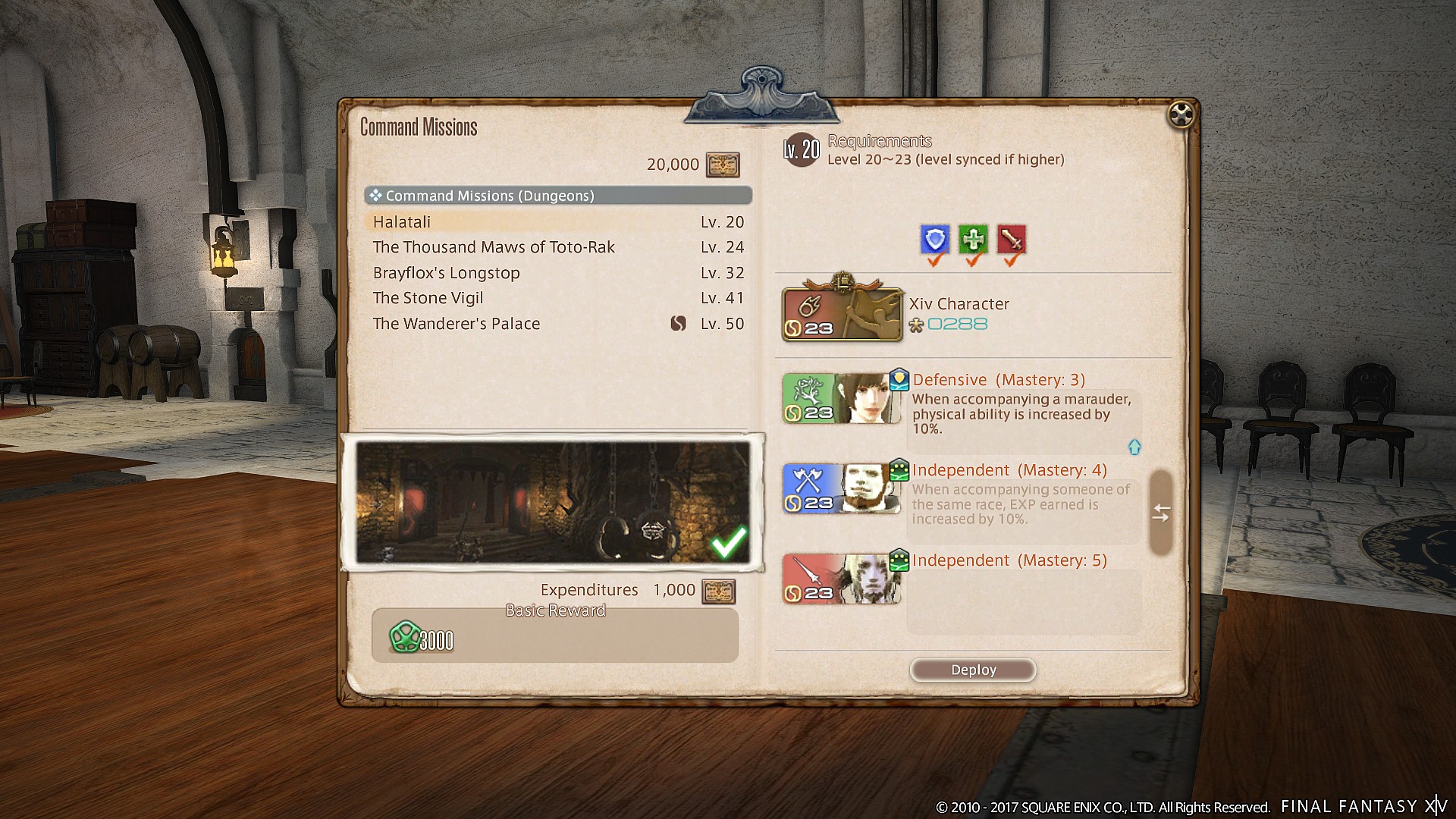
At this time of writing however, their AI isn’t very good. Liberal use of Engage and Disengage will be needed to make sure they focus on specific foes, and move out of AoEs. As such, you’re better playing as the Healer to make sure they don’t die.
Even though their Classes can affect bonuses for the Squadron Missions, the best DPS Classes for them tend to be Archer and Arcanist (for single and group targeting), while Gladiators make the best Tanks. The only Class Healer Recruits can be is Conjurer.
This shouldn’t be stressed over, as you should be able to beat any Dungeon with any Classes (and worst case, using the typical composition of Tank, Healer, and two DPS). Leveling them up to the maximum also tends to make the damage they suffer non-existent, and daily Squadron Missions should see to that.

RELATED: Square Enix Mocked For Hosting Pride Month Art Contest Amid Fiscal Woes
Players joke the real end-game isn’t the harder battles; getting your own housing and Glamours is. This is what other MMOs call transmog and other terms — making a piece of gear look like another while keeping its own stats.
You’ll unlock Glamours at level 15 in Western Thanalan with the ‘If I Had a Glamour’ Feature Quest. You can later buy Tomes enabling you to craft your own Glamour Prisms, but usually its easier to turn in gear from Duties to your Grand Company, and buy them for Company Seals.
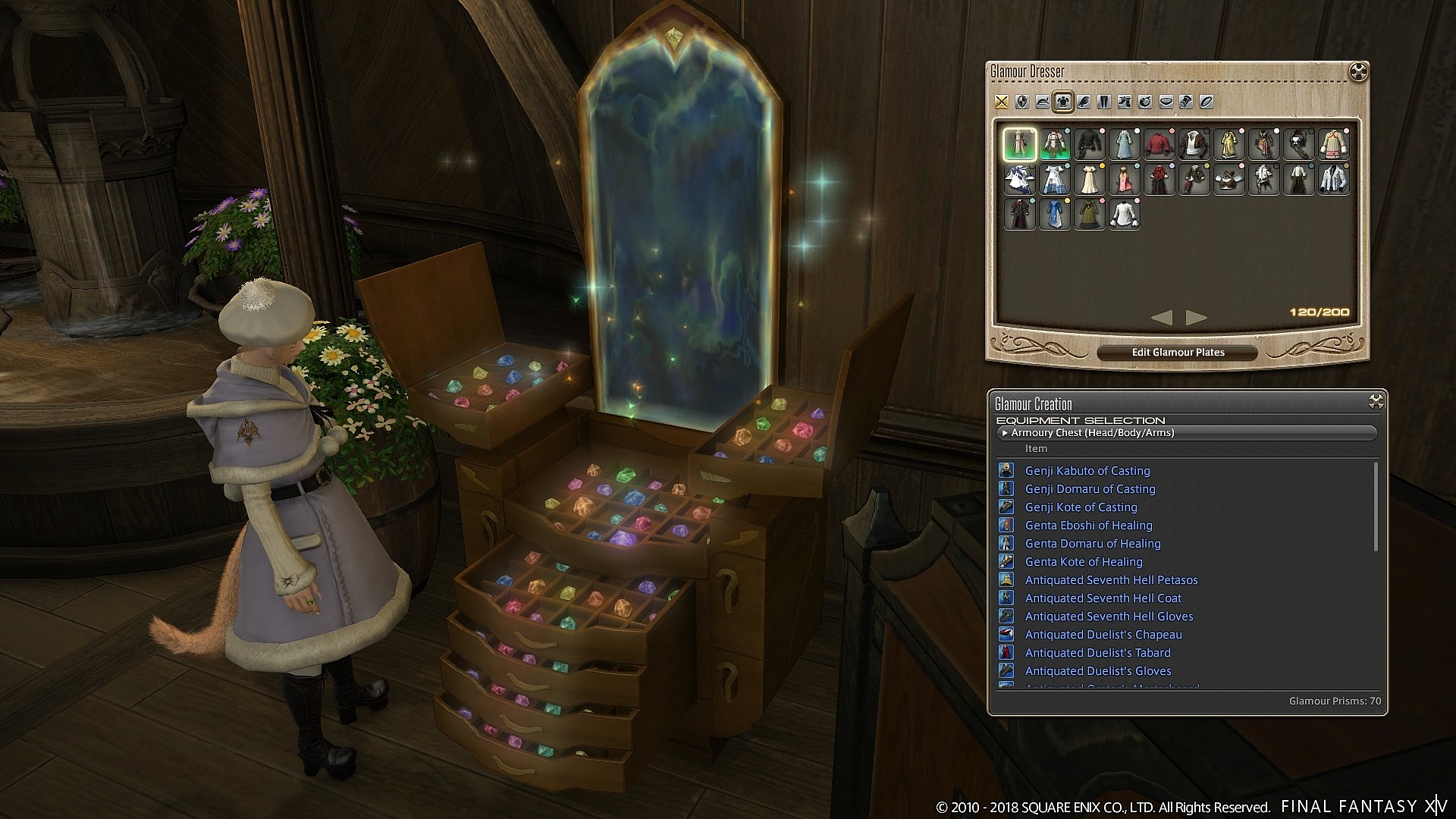
While you can use the Prisms to change individual pieces of gear, you can also use them to store items in your Glamour Dresser at the Inn or Grand Company HQ. You can then apply that piece of gear to any other without spending further Prisms, or assign it to a Glamour Plate.
This is a fixed set of Glamours you can assign to a gear-set to ensure you always keep the same look. This is useful if you want a different style for different Jobs that share the same piece of gear. On a related notes, some Dyes can only be crafted, while other can only be bought from NPCs.
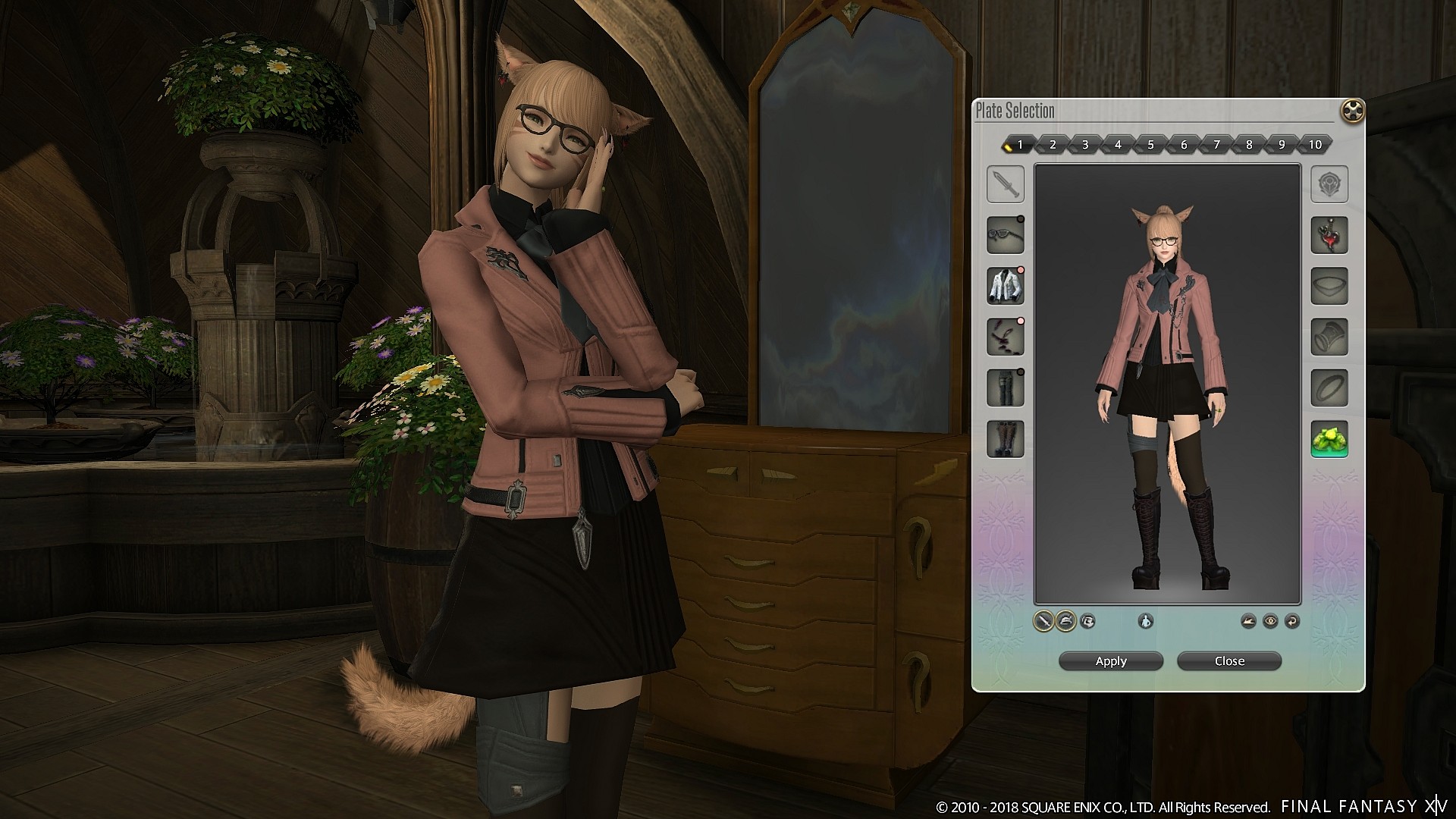
There are very few items you “need” to keep for the future. Items that are hard to Gather tend to respawn at least 24 hours later in “Eorzean time” (an hour and ten minutes in real time), or you can buy hard-to-get items from the Market Board if you can afford it. But there are two notable exceptions.
In Stormblood, you’ll eventually unlock the Doman Enclave Reconstruction. You give them items to meet the next milestone equal to the items’ value in Gil, and in return (up to the weekly budget) you are given more Gil than the items are worth. This is initially 20% more, eventually rising to double.
Allagan Silver Pieces are a frequent reward in quests — 301 quests to be precise — along with Desynthesizing fish you catch. Rather than sell them immediately for 500 Gil each, hang onto them if you can, and you can sell them for more. Bronze Pieces are also a frequent reward and potential fish Desynth reward, but not as plentiful as Silver, and are only worth 100 Gil.
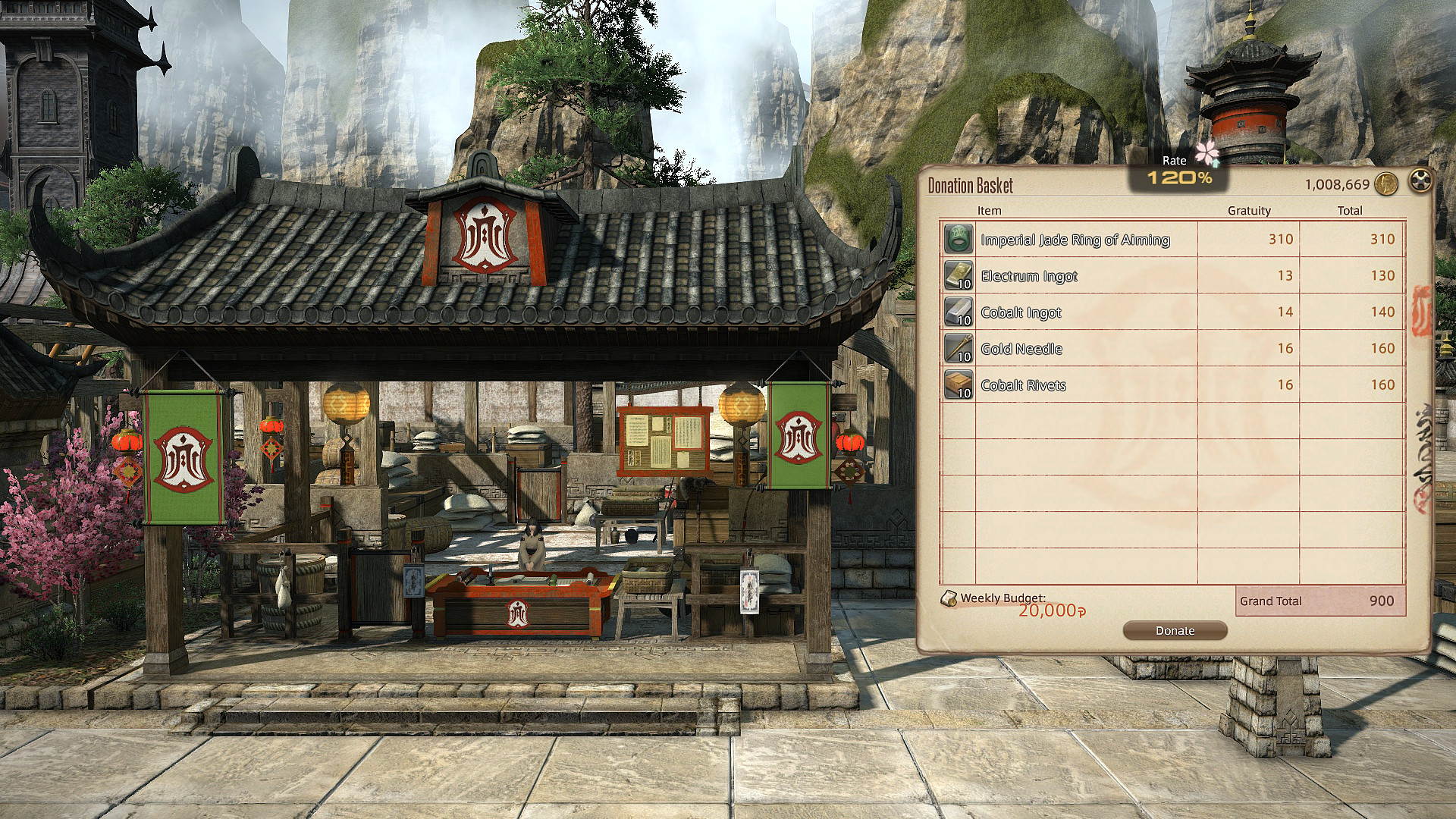
Another thing to hold onto is Materia, specifically low-grade ones. While you typically don’t need to worry about Materia outside of end-game Best-in-Slot gear, Grades I to IV of combat Materia are used for one of the stages of the ARR Relic Weapons.
Relic Weapons typically require lengthy quests, gathering resources and replaying Duties to upgrade the weapon to its next stage. Two pieces of specific Grade III Materia are needed to create the base Zodiac Relic weapon. After that, after the Animus Zodiac Weapon stage, players can obtain its accompanying Sphere Scroll to turn it into a Novus Zodiac Weapon.

RELATED: ‘Live A Live’ Director Takashi Tokita Hopes To Make Sequel To His Classic RPG
Players must affix 75 pieces of Materia — no more than eleven of each type and grade — for each Novus Zodiac Weapon they wish to make. Higher grade pieces can only be used once the lower grades have been maxed out, and have an increased chance of failing to apply — destroying the Materia in the process!
While the stats are inherited to later stages of the Relic, it should be noted their stats (even when optimized) are out classed by weapons and Relic Weapons obtained in later expansions.
Follow the links for the questlines for the ARR, Heavensward, and Stormblood Relic Weapons, and dig through for future items you may want to hold onto. Just try not to fill your inventory with stuff you’re not going to need for several hundred hours! Further, Endwalker Relics also demanding clearing nigh-all the Hildibrand side quests.
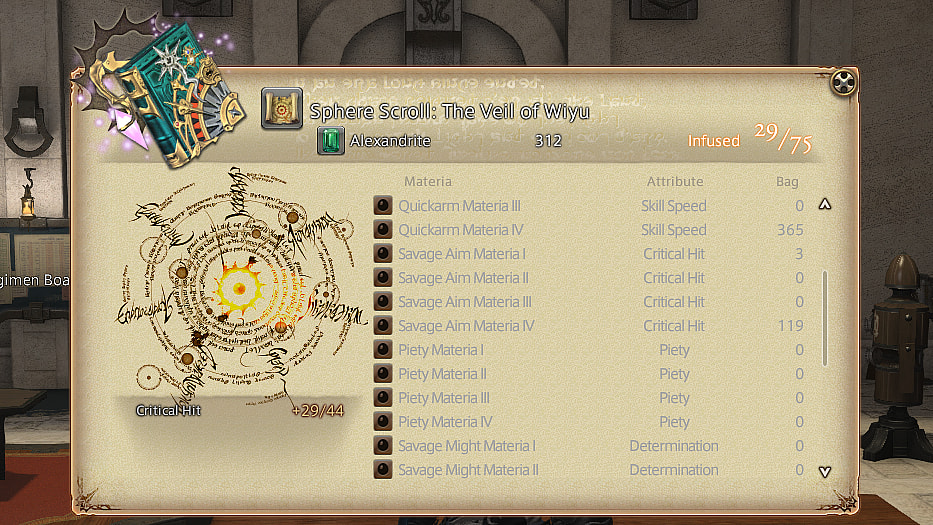
While Gathers and Crafters do not have Soul Crystals, the latter eventually unlocks Specialist Souls. You can only hold up to three at a time — in turn, they grant a few extra actions and stats to make crafting easier. Their real value is letting players craft the latest Special Recipes.
However, older Specialist Recipes become depreciated into a normal recipe that doesn’t need a Specialist Soul. Since it will be a long time until you get to end-game crafting, just pick the Specialist Soul of your favorite Crafter, or whatever meets your needs. Even then, you can trade in the Souls for other ones up to three times a week.

For those interested in the game’s story, the Raids you unlock (usually after clearing the MSQ for that expansion) also grant additional dialogue for later scenes in the MSQ. As such, you usually want to take them on once you’ve unlocked them (and in turn, giving you another daily Roulette to take on).
There are also a handful of instances where dialogue is different depending on your Job during the scene. Try entering Ishgard as a Dragoon during the start of Heavensward for instance (one particular character in that also becomes a major character during that expansion).
Finally, for those grinding MGP in the Gold Saucer, keep in mind the Lord of Verminion tournaments need not be fought against other players. ‘Master Tournament’ against the AI will count, and don’t even follow the tournament rules (the “rankings” it doesn’t count are general pvp rankings)! Thanks to the low number of participants, you can get a boat-load of MGP.
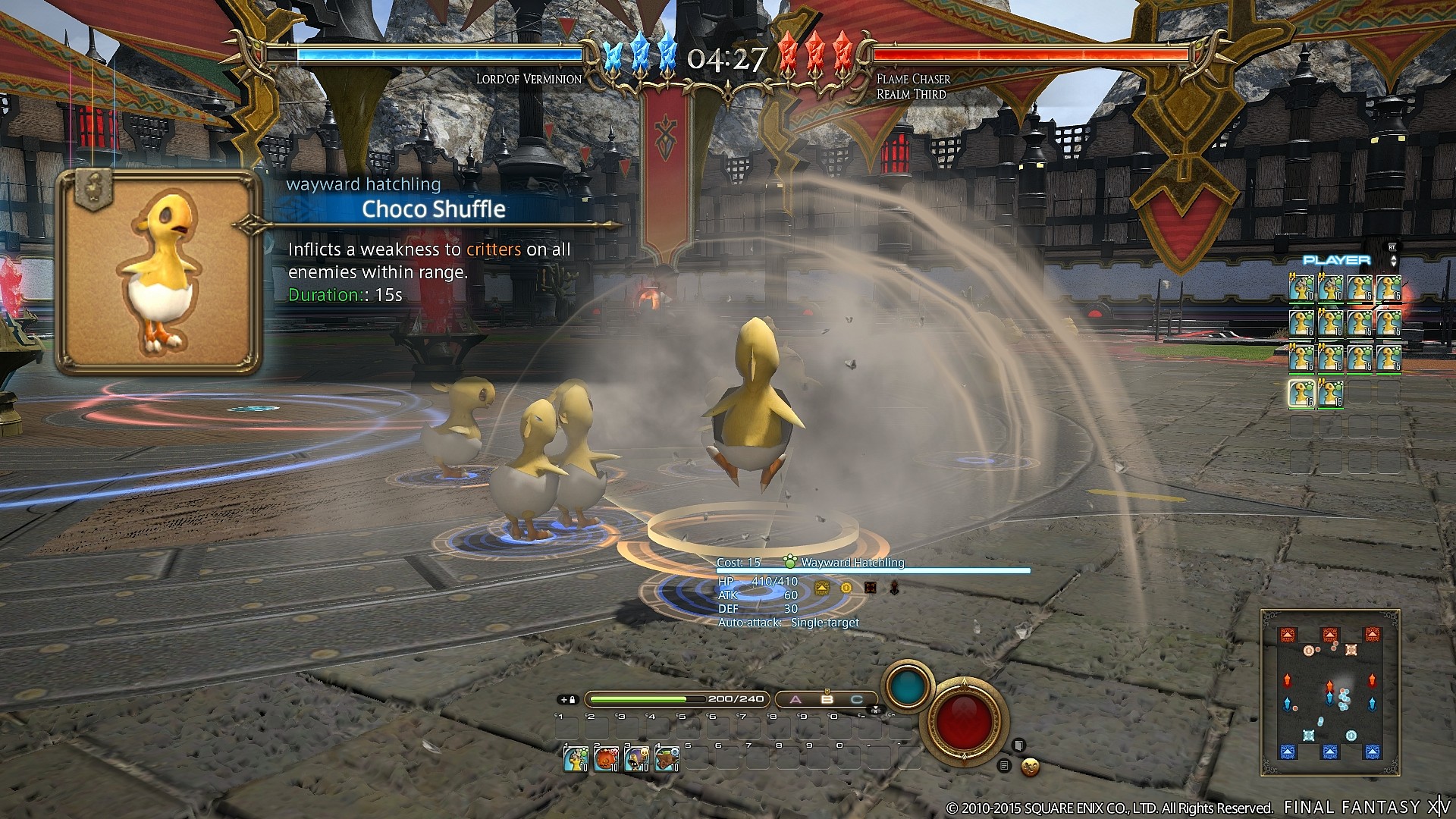
Useful Websites
Final Fantasy XIV Discord – Although this is not an official Discord server for the game — being an offshoot of the fan subReddit — it is the largest. While the rules are strict, it’s great to ask newbie questions, use the Kupo Bot for quick access to useful info, and even calling on others to help take on content.
Final Fantasy XIV Online Wiki – A wiki that has nigh-everything you need to know, including the levels content unlock at and far more. It is a fan-wiki, so keep in mind there may be the very rare occasion a piece of info is wrong or incomplete (something that is quickly resolved when brought up to the owners).
There’s also Gamer Escape, that may have any info the former doesn’t have.

RELATED: ‘Final Fantasy XVI’ State Of Play Presentation Showcases Combat, New “Story Focused” Mode, And More
The Balance – A Guide-focused website that explains how your Job plays, and what your rotation should be as you level your Job. Keep an eye on the patch number the guides mention, in case a more recent patch has changed or removed certain actions.
Garland Tools Database – An exhaustive list of everything, including every item in the game, and how to find or make it. It can even show you what gear uses the same models. The box-based UI also helps organize to-do lists, what gear you should be wearing for your Job’s level, and more.
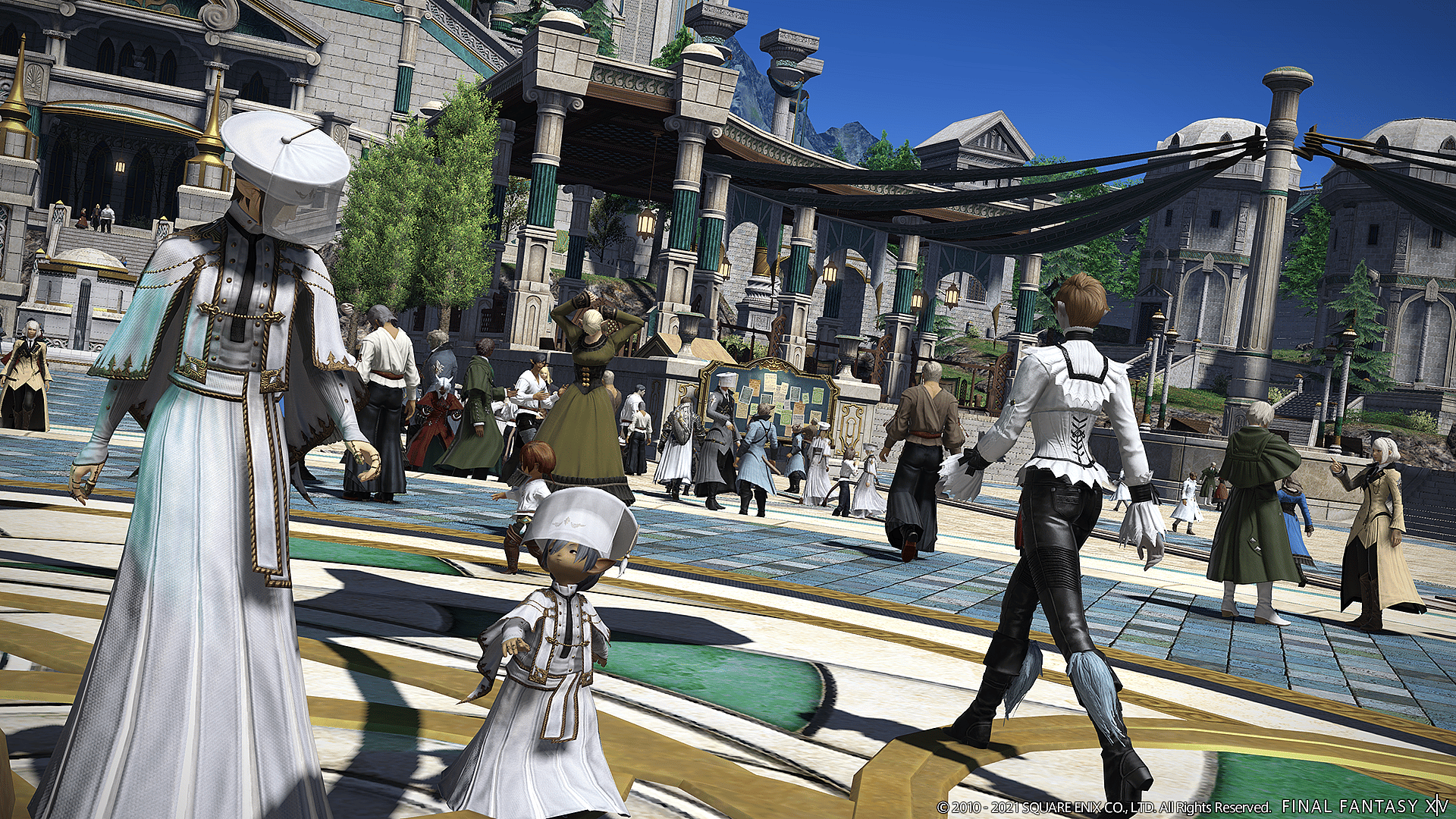
Faloop! – A website that tracks when the various Hunt Elite Marks and Achievement FATEs should be active across all the game’s servers. Their accompanying Discord server also lets other players share when they are up.
Maygi’s POTD 1-200 Handbook – Don’t let the name fool you. This Google Doc can help with all three of the Deep Dungeons: Palace of the Dead, Heaven-on-High, and Eureka Orthos. Along with party play, it can also help prepare you for the daunting challenge of taking them on solo. Best of luck!
On a related note, the Field Operations, Variant Dungeons, and Criterion Dungeons come into play much later. Field Operations are unlocked after completing Stormblood, and Variant and Criterion Dungeons after completing Endwalker. As such, you shouldn’t have to worry about this off the bat, unless you’ve bought a level-skip.

RELATED: ‘Dragon Quest’ Series Chief Producer Ryutaro Ichimura Resigns From Square Enix
Teamcraft Guides – Not only do they provide guides for leveling your Crafters and Gatherers — even Macros to save some clicks and automate the easier crafts — but their extremely useful guides for Expert Crafts, Ocean Fishing, making the most out of the Ishgardian Restoration and Diadem, and getting the Pteranodon Mount.
FFXIV Fish Tracker App – Keeps track of all the rarer fish in Eorzea, when they spawn, and how to nab them. Some of these also link to YouTuber Fruity Snacks’ guides on the timing.
Kaiyoko – A streamer who helps solve each week’s Fashion Report at the Gold Saucer. Remember, you’ll get 60,000 GP whether you get more than 80 points — the full 100 is only needed once for the ‘Fashion Leader’ title. The FFXIV Discord Server also uses Kupo Bot to call up their findings.

FFXIV Chocobo Racing – A WordPress website to learn the basics of Chocobo racing and breeding.
FFXIVerminion – A complete guide to the basics of Lord of Verminion. Especially useful to help clear the solo Challenges.
FFXIV Collect – A website that tracks and catalog all the Achievements, Titles, Mounts, Minions, and Relic Weapons you can earn. Useful if you want to flex your rarest loot.
Eorzea Collection – Not to be confused with the above, this website not only tracks every set of gear you can wear, but acts as a gallery for players to show off the best glamours. Borrow a look, or use it for inspiration for an original creation.

